Download as PDF, PPTX
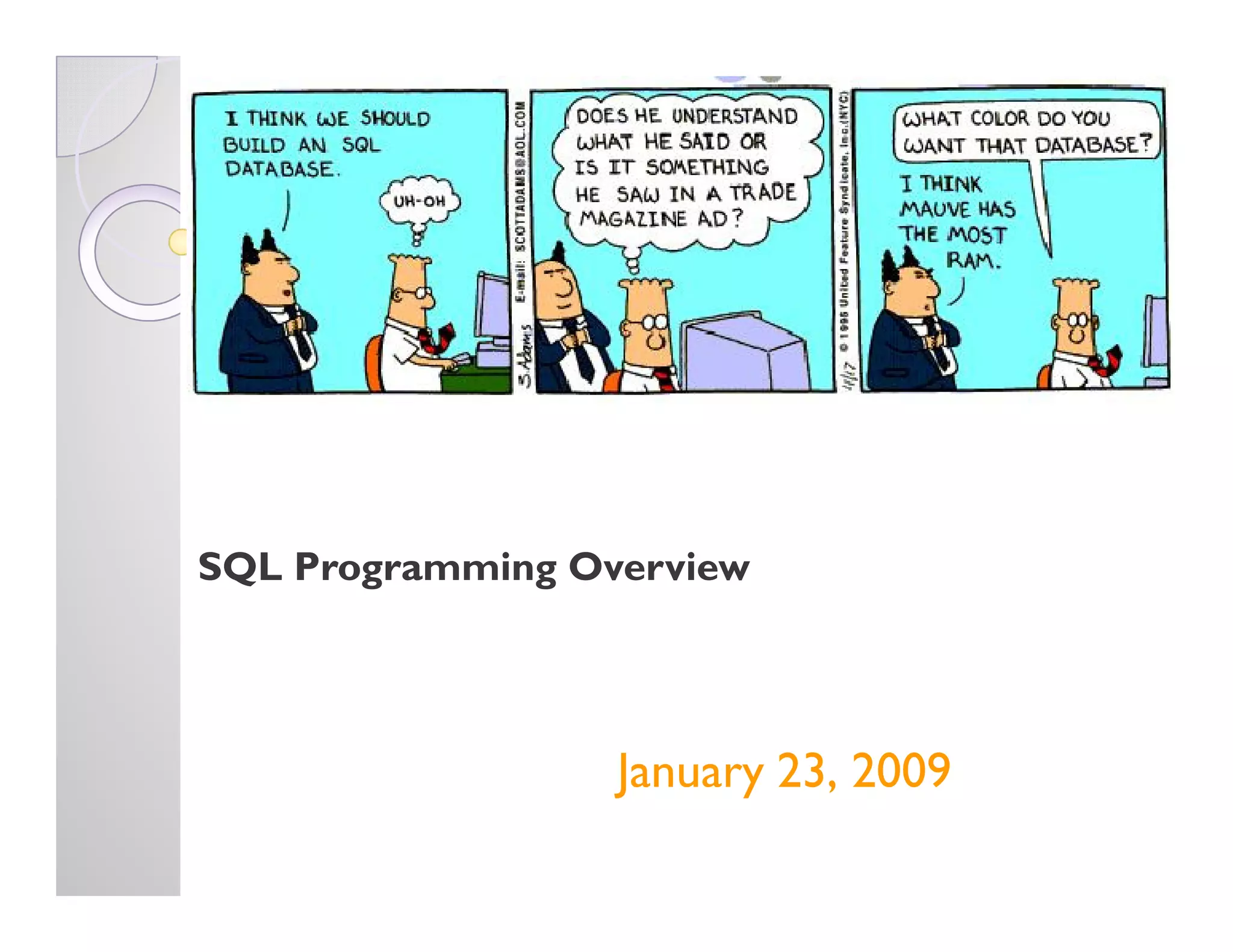
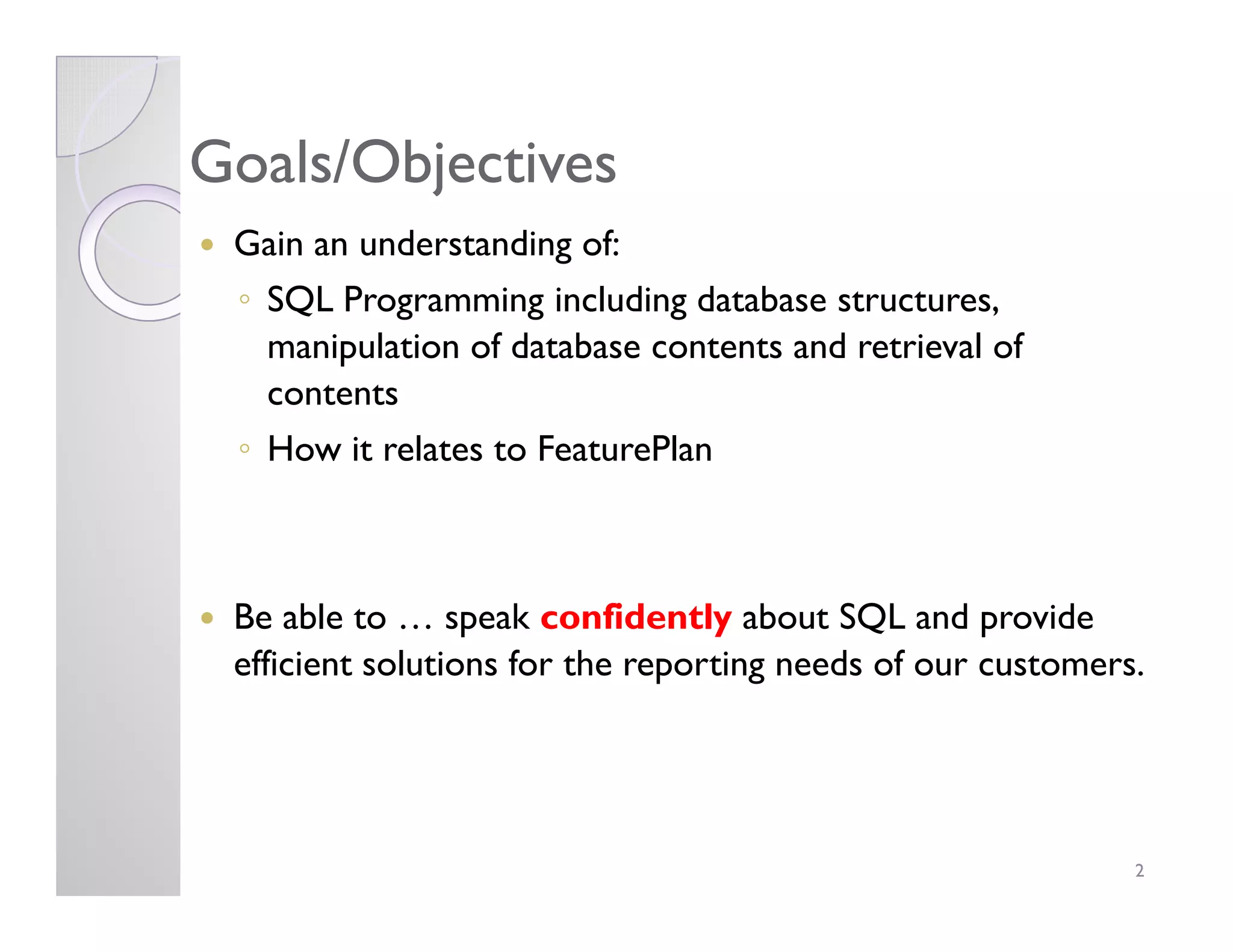
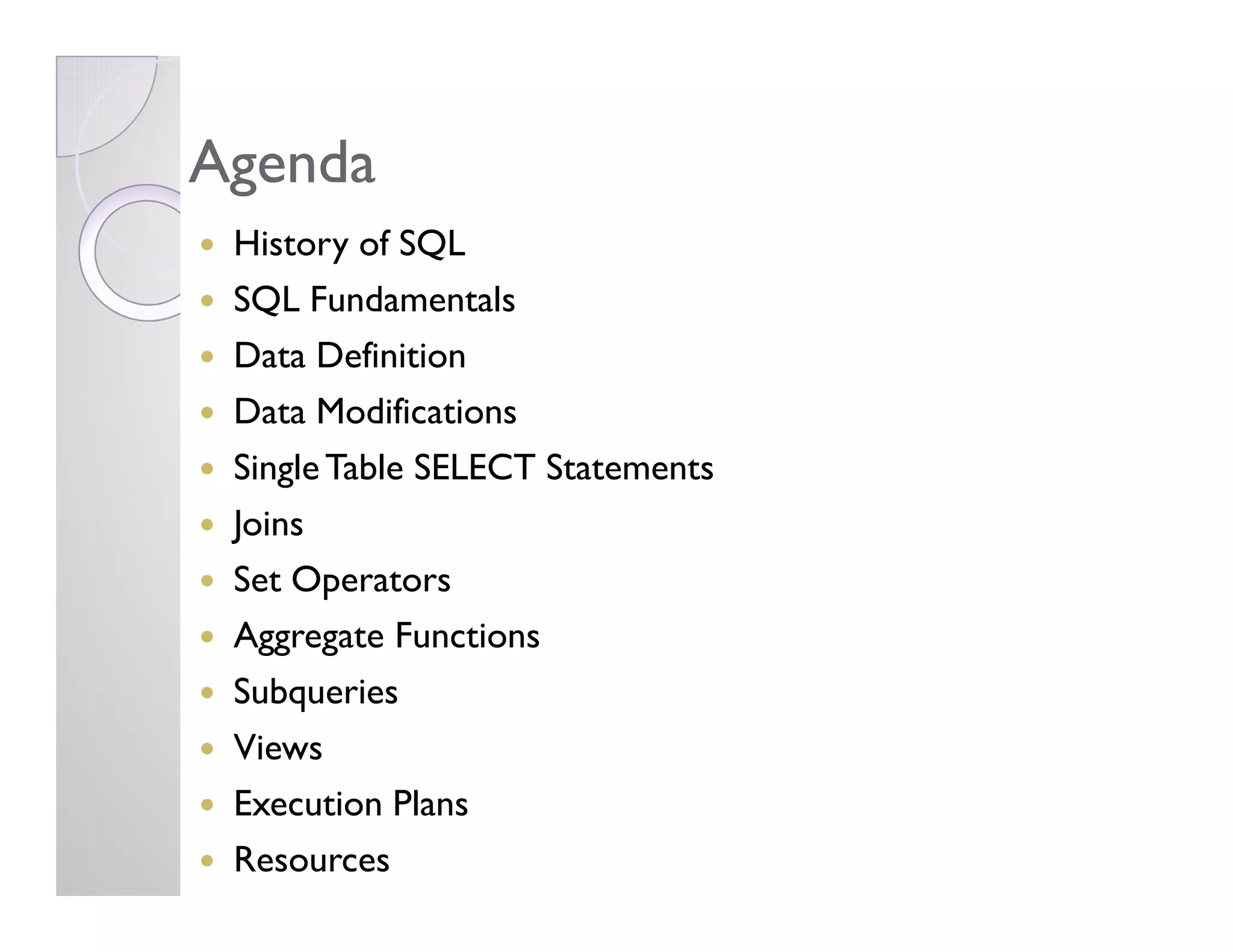
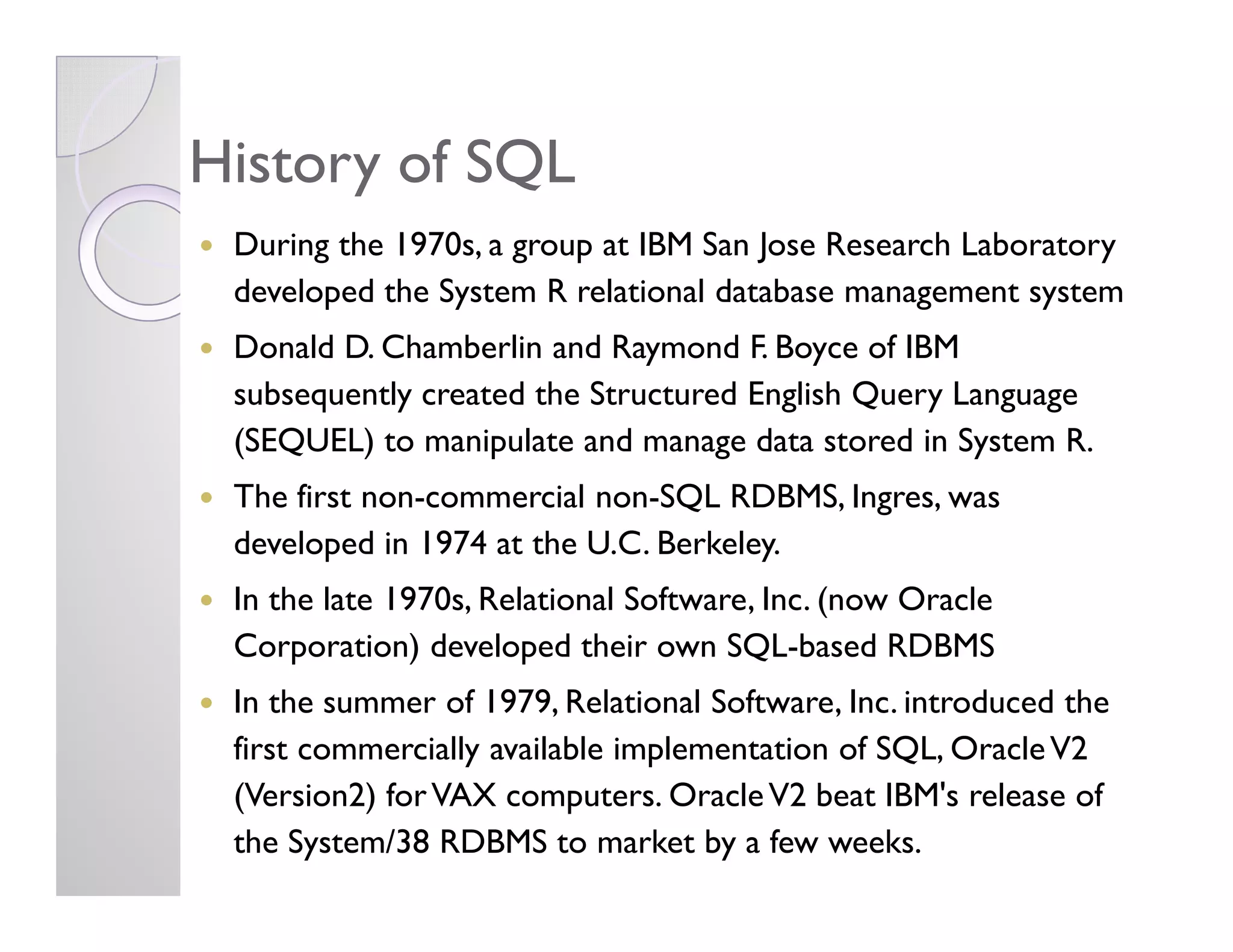
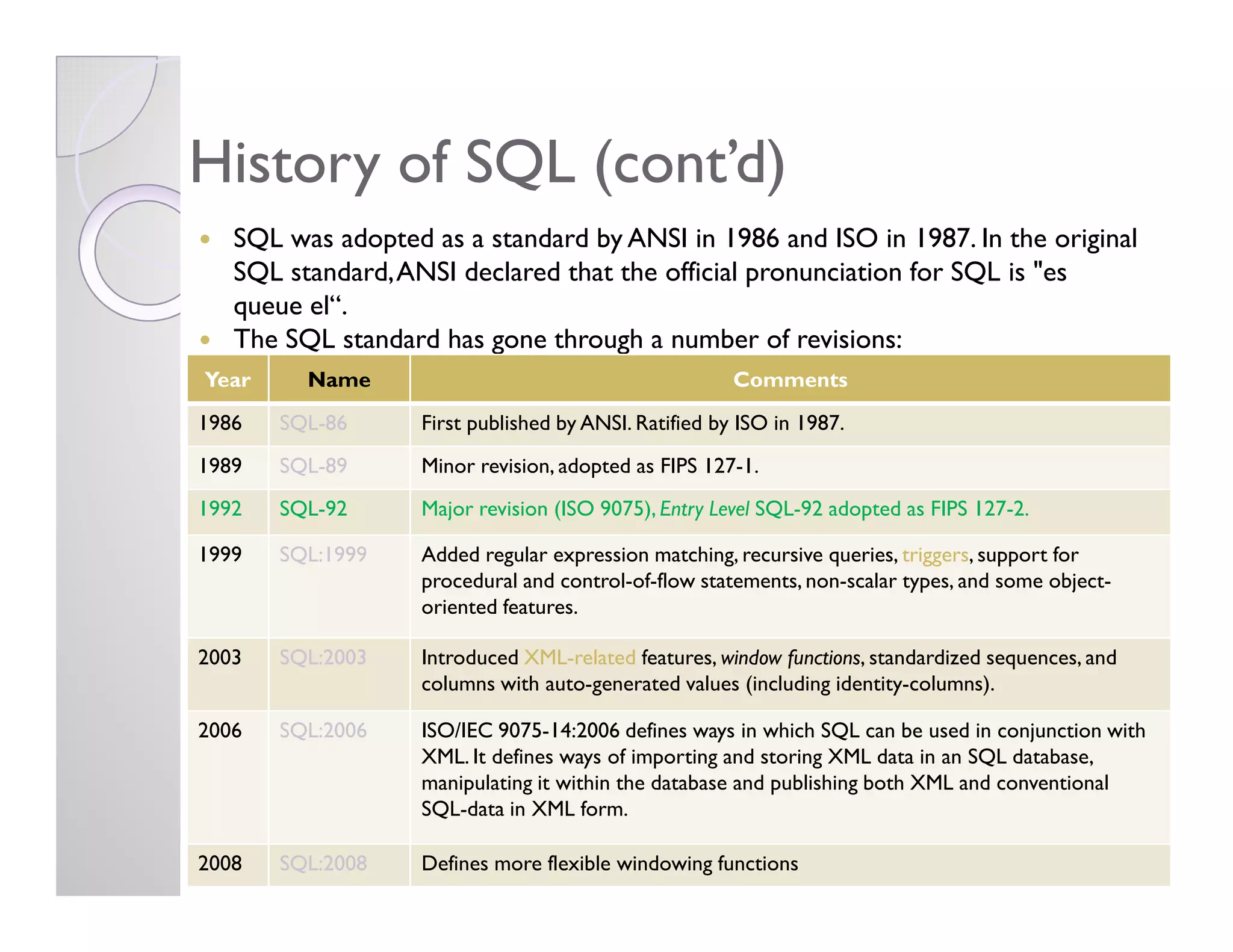
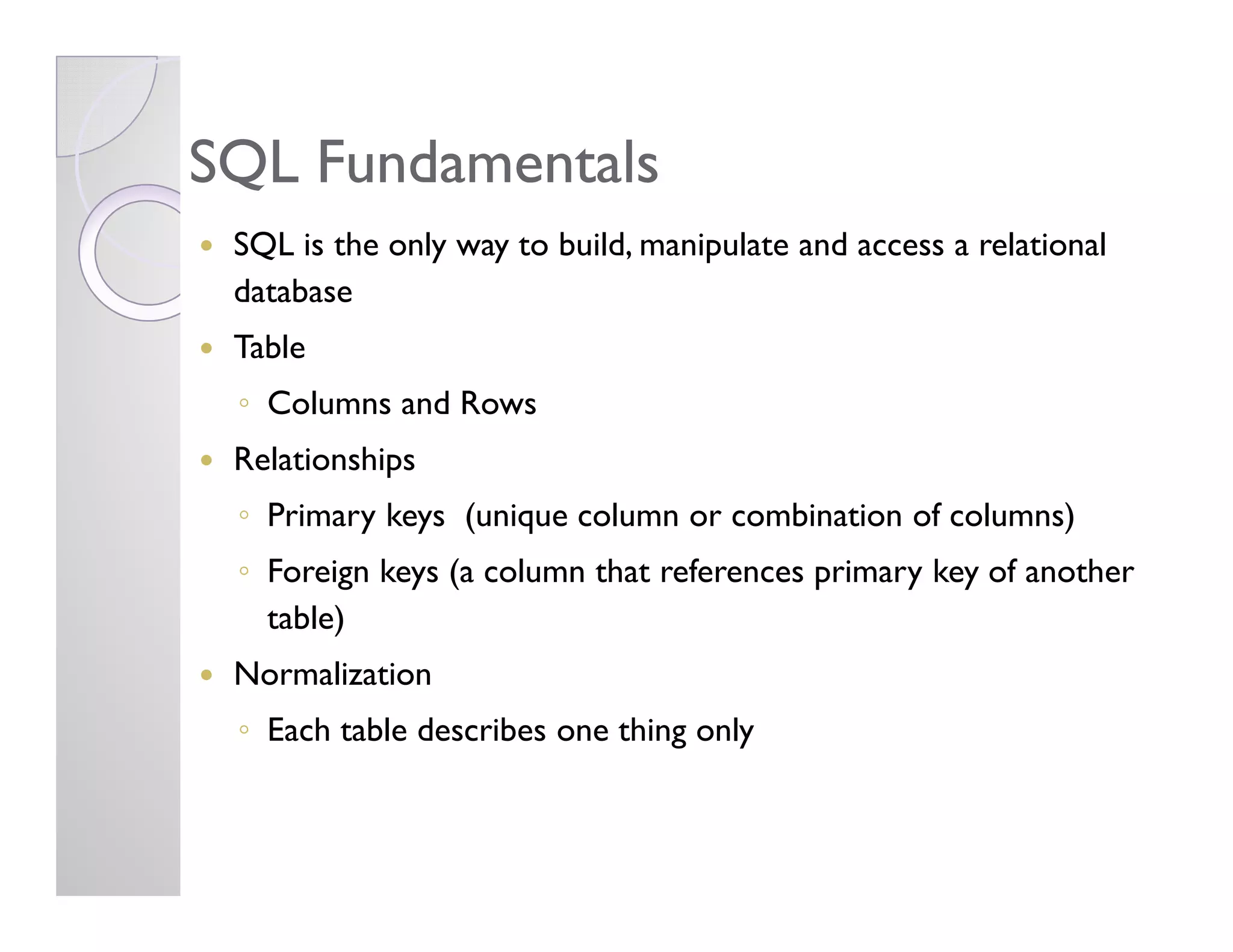
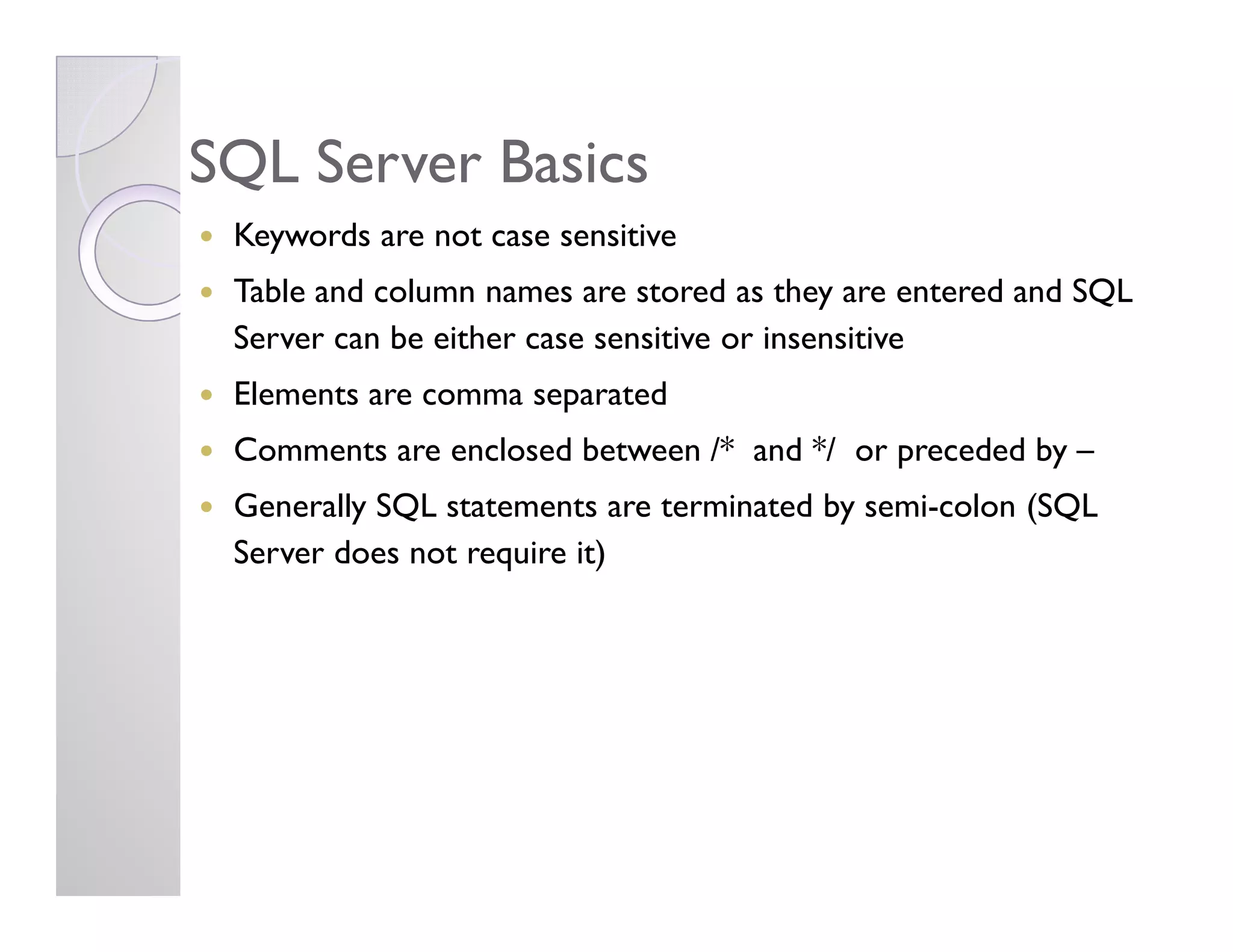
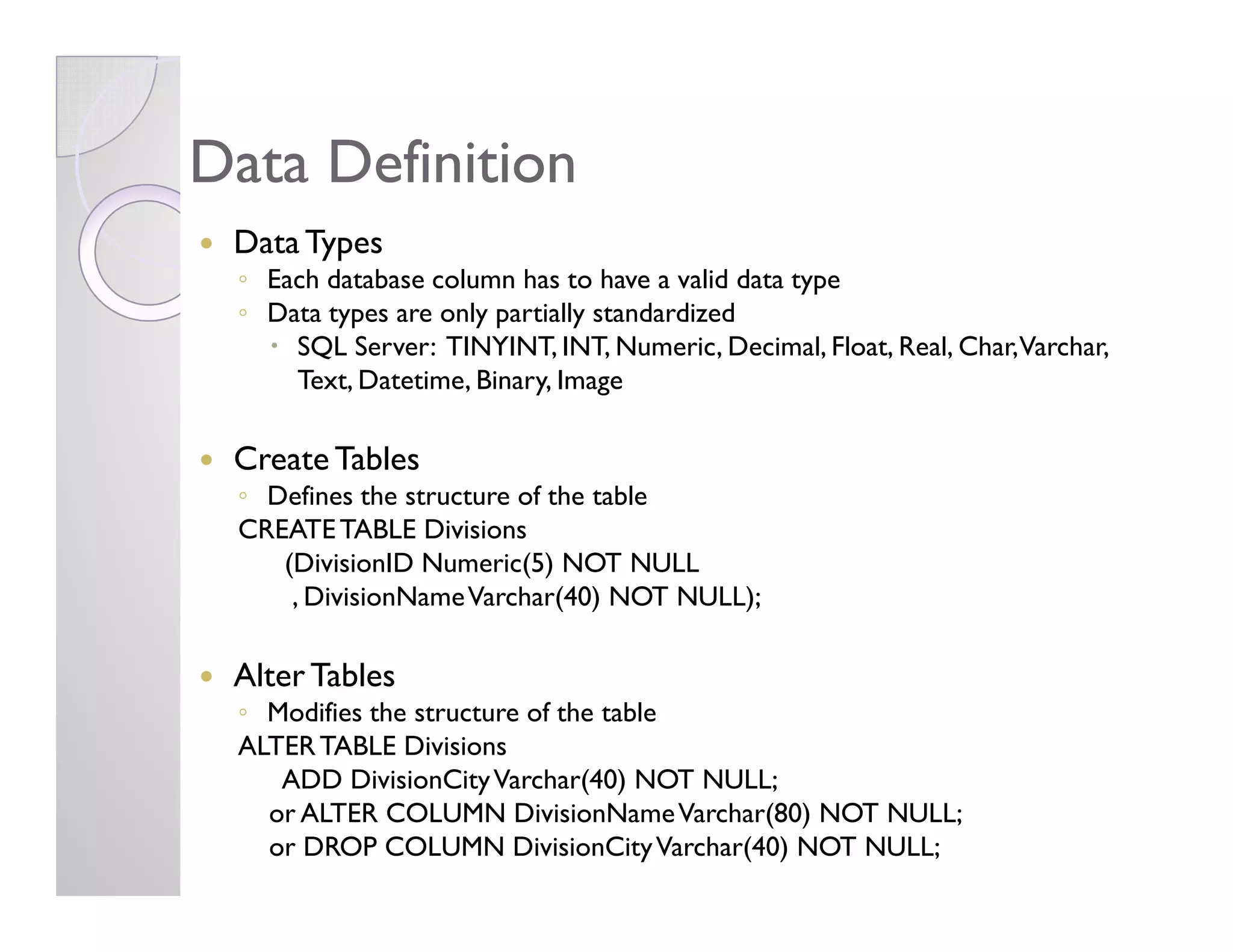
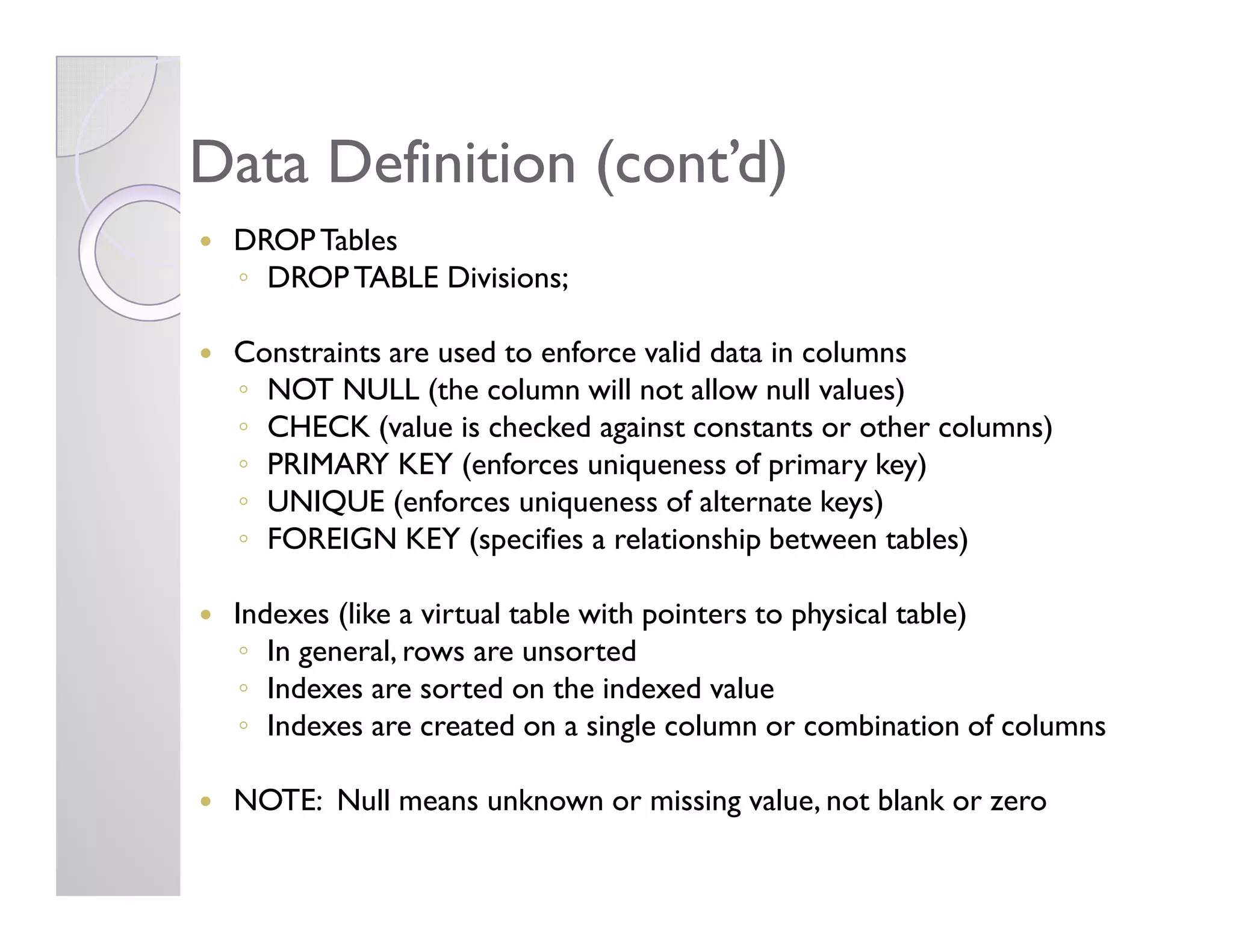
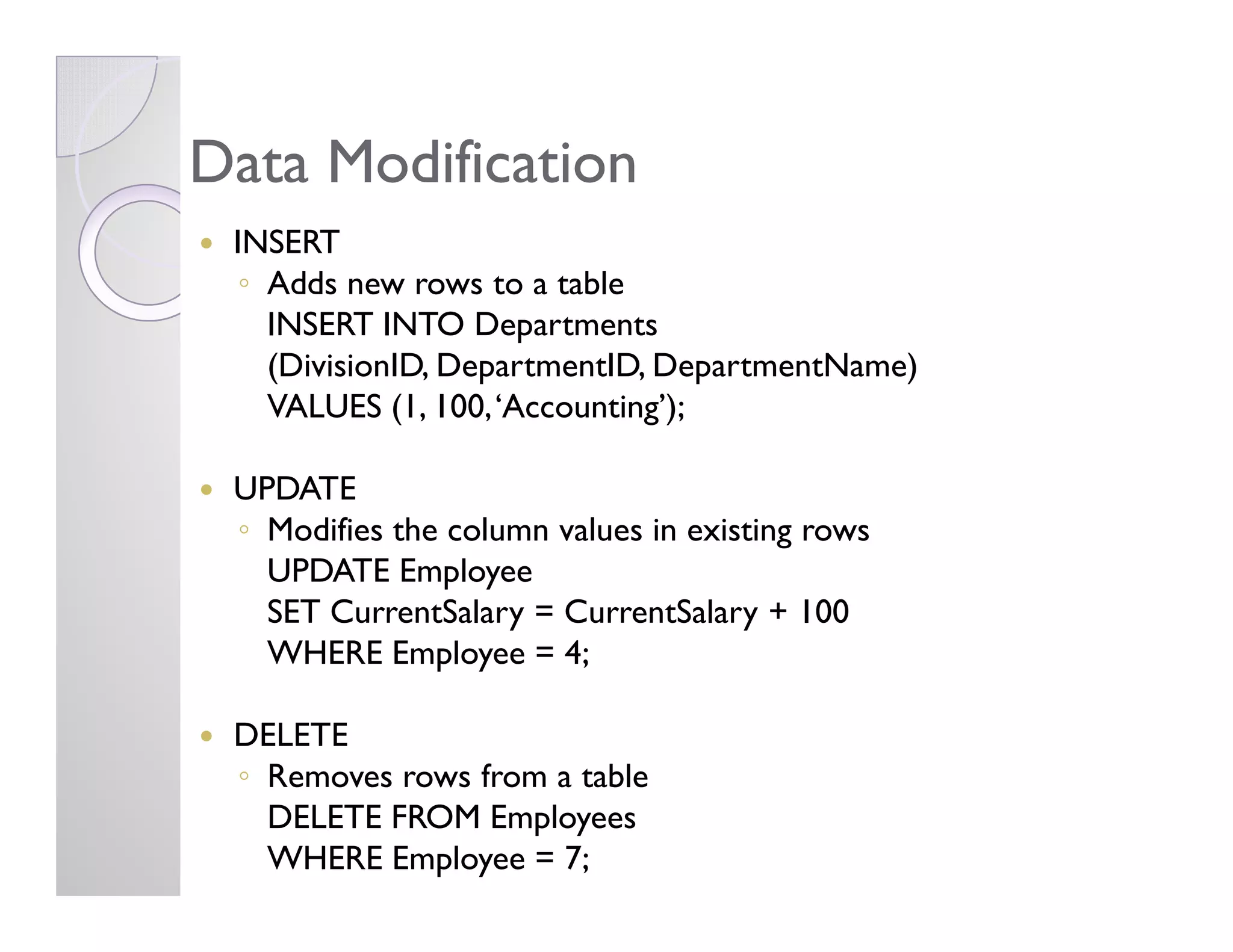
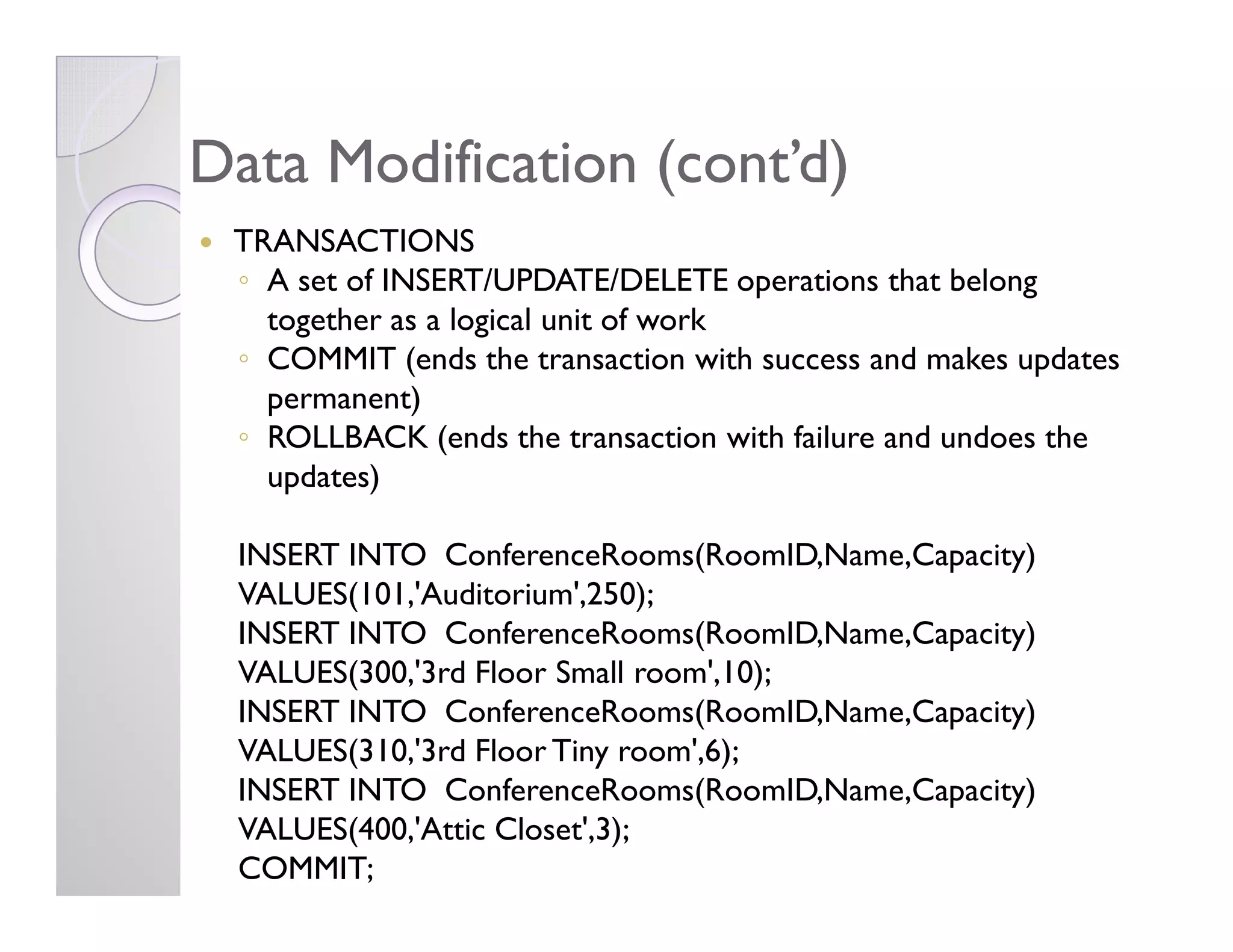
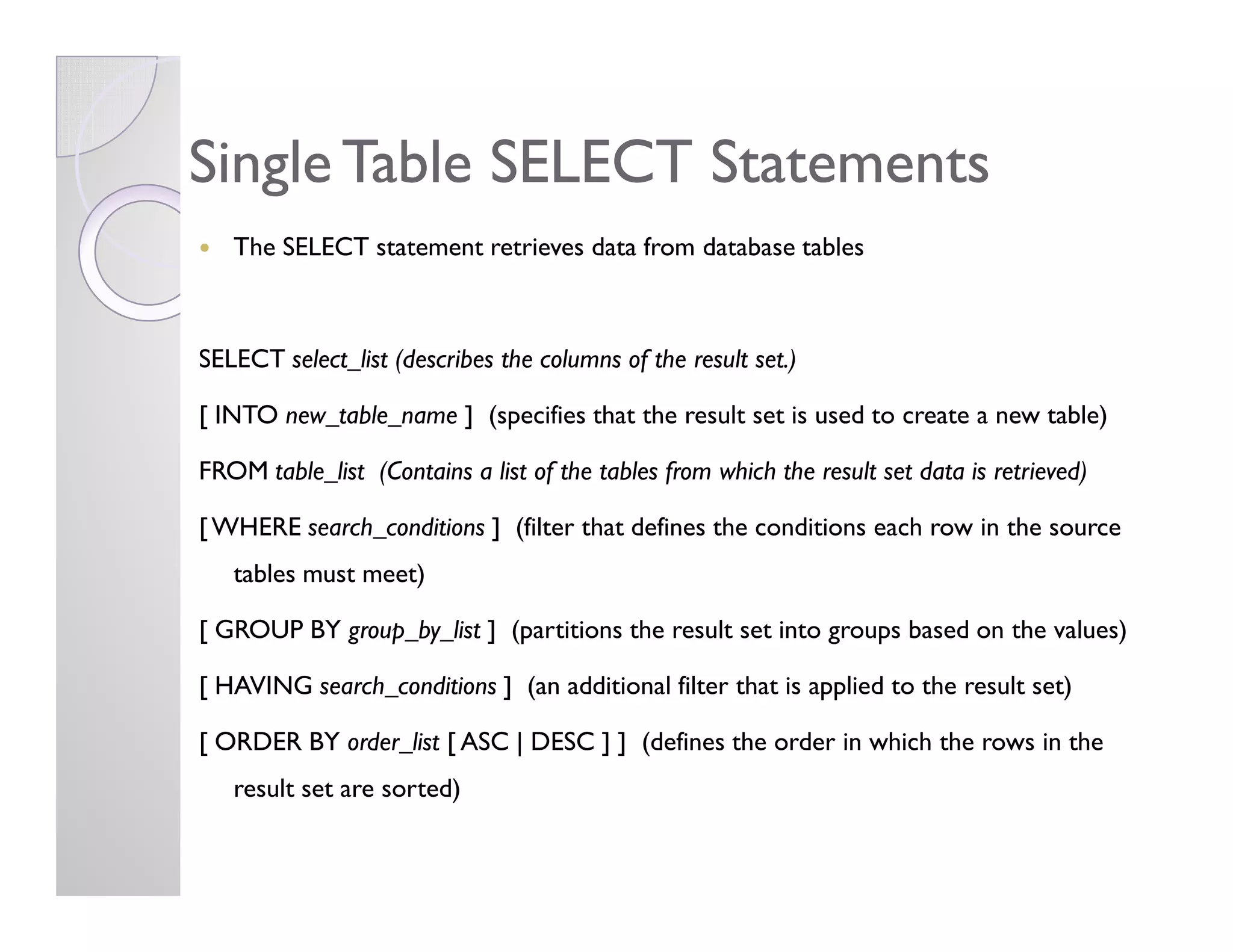
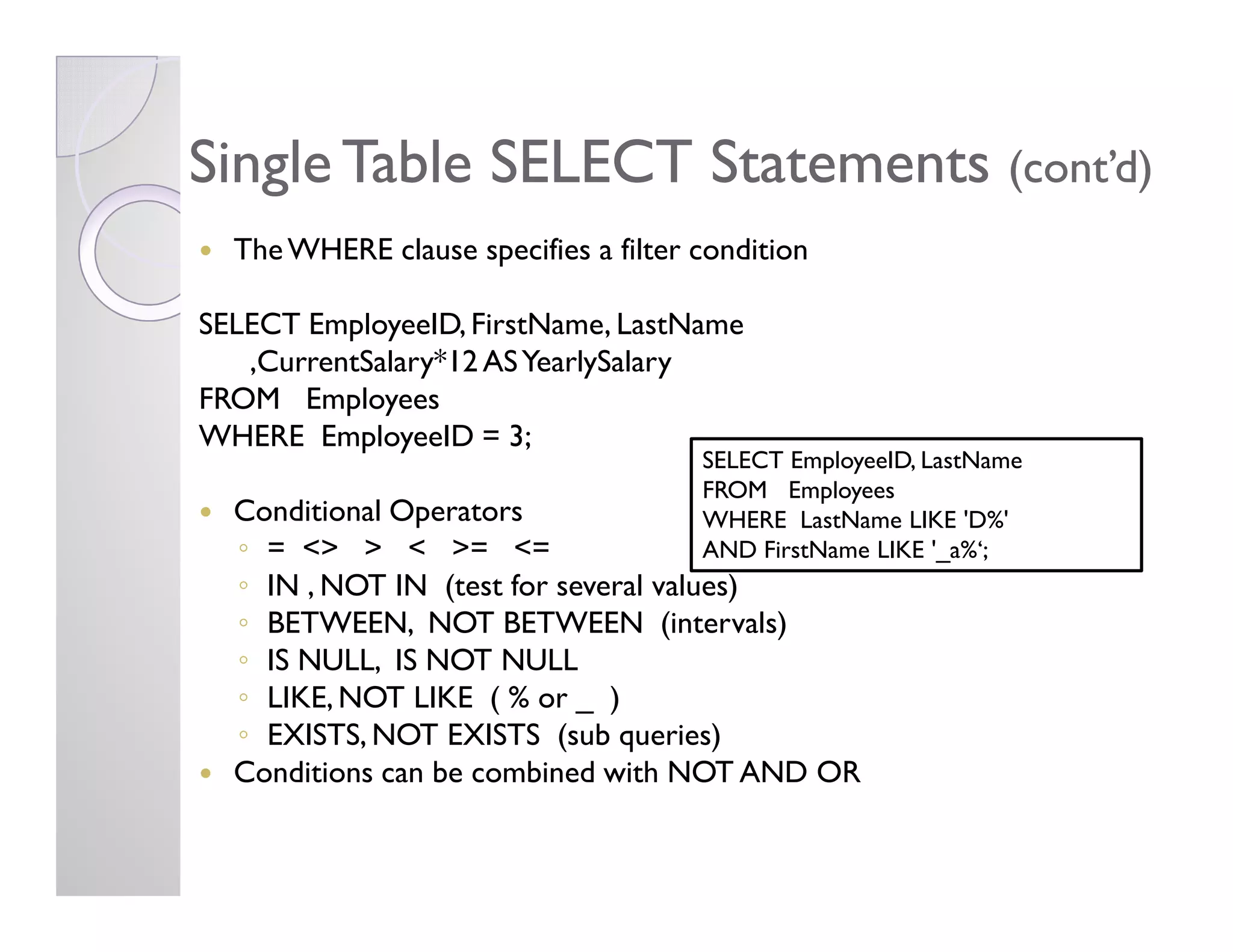
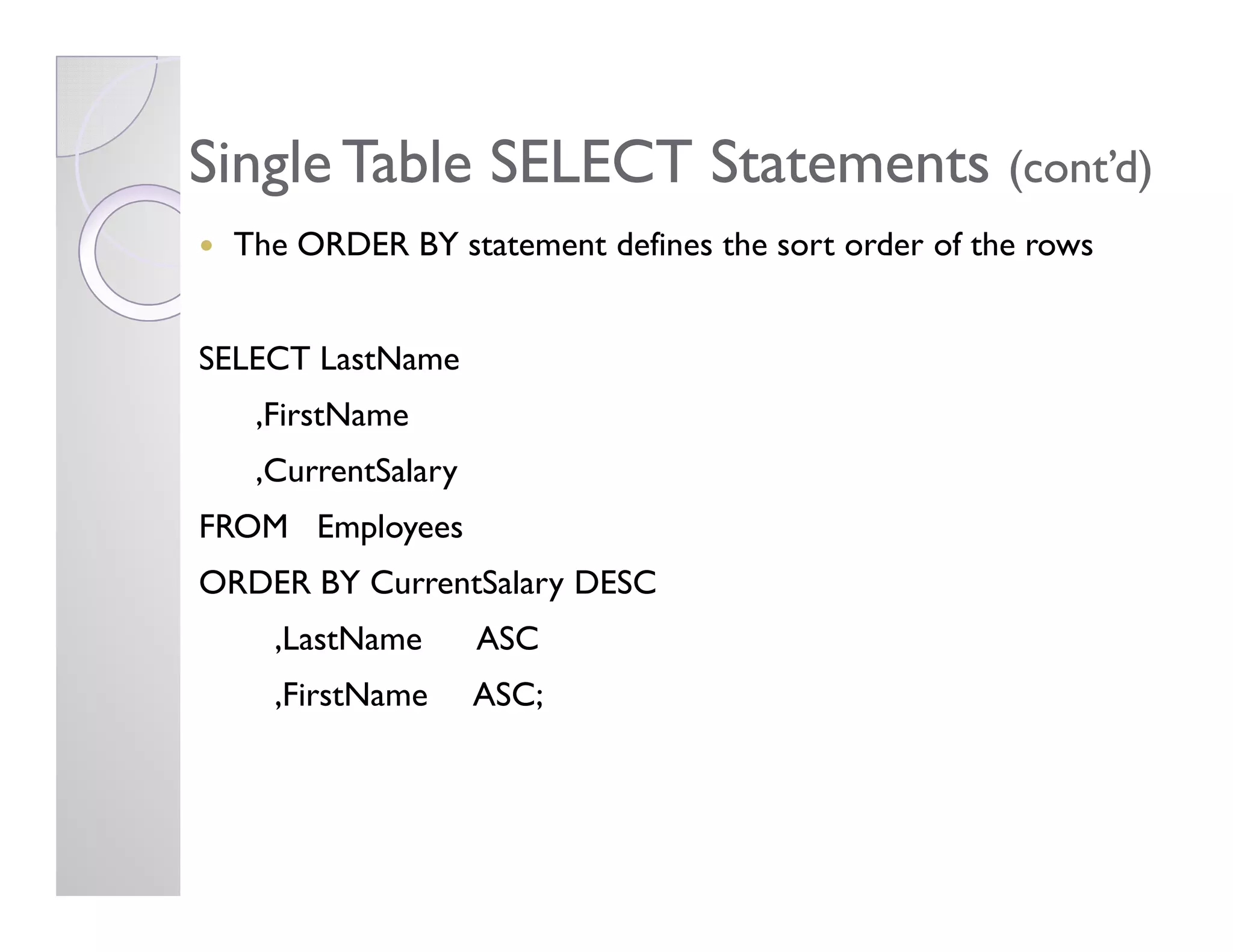
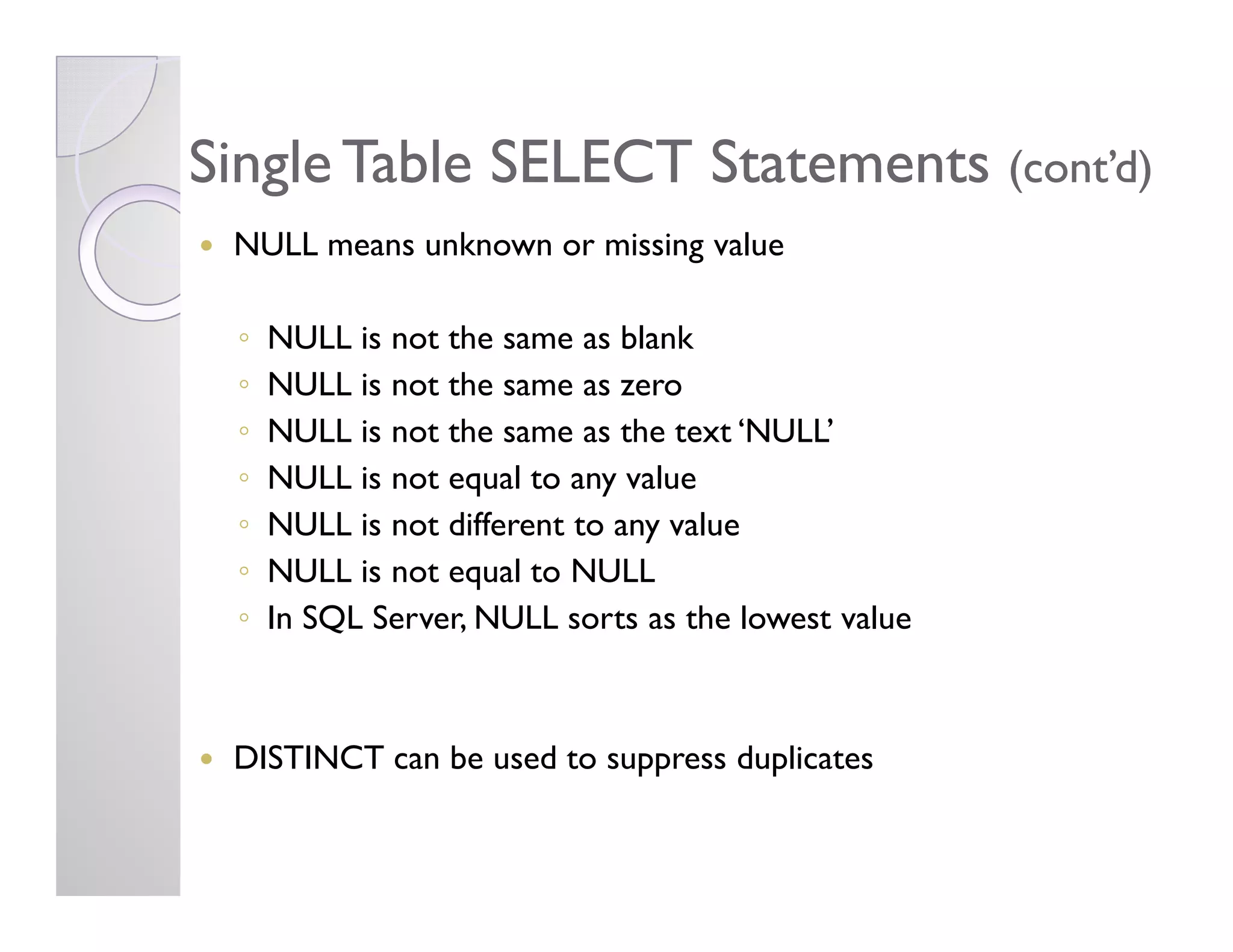
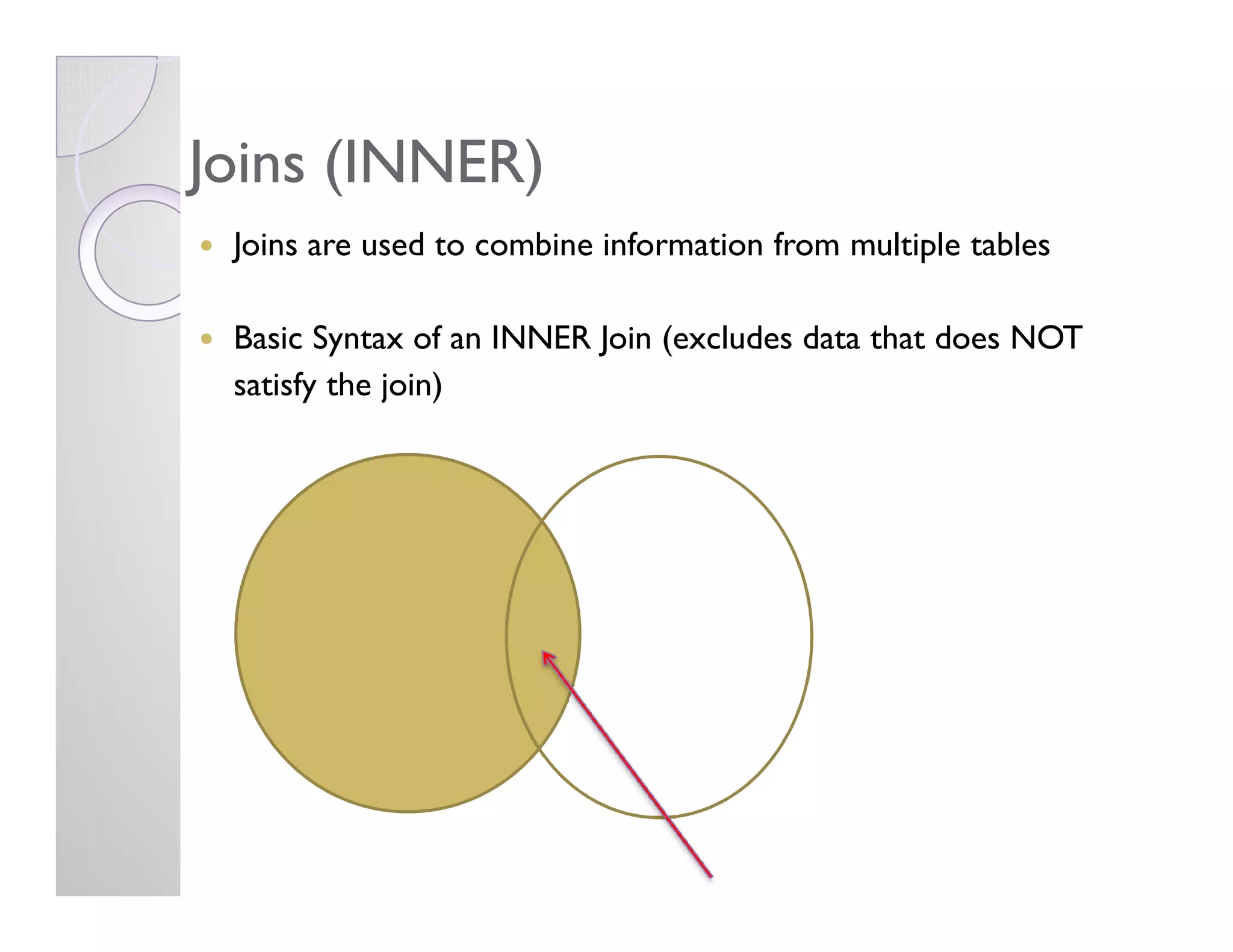
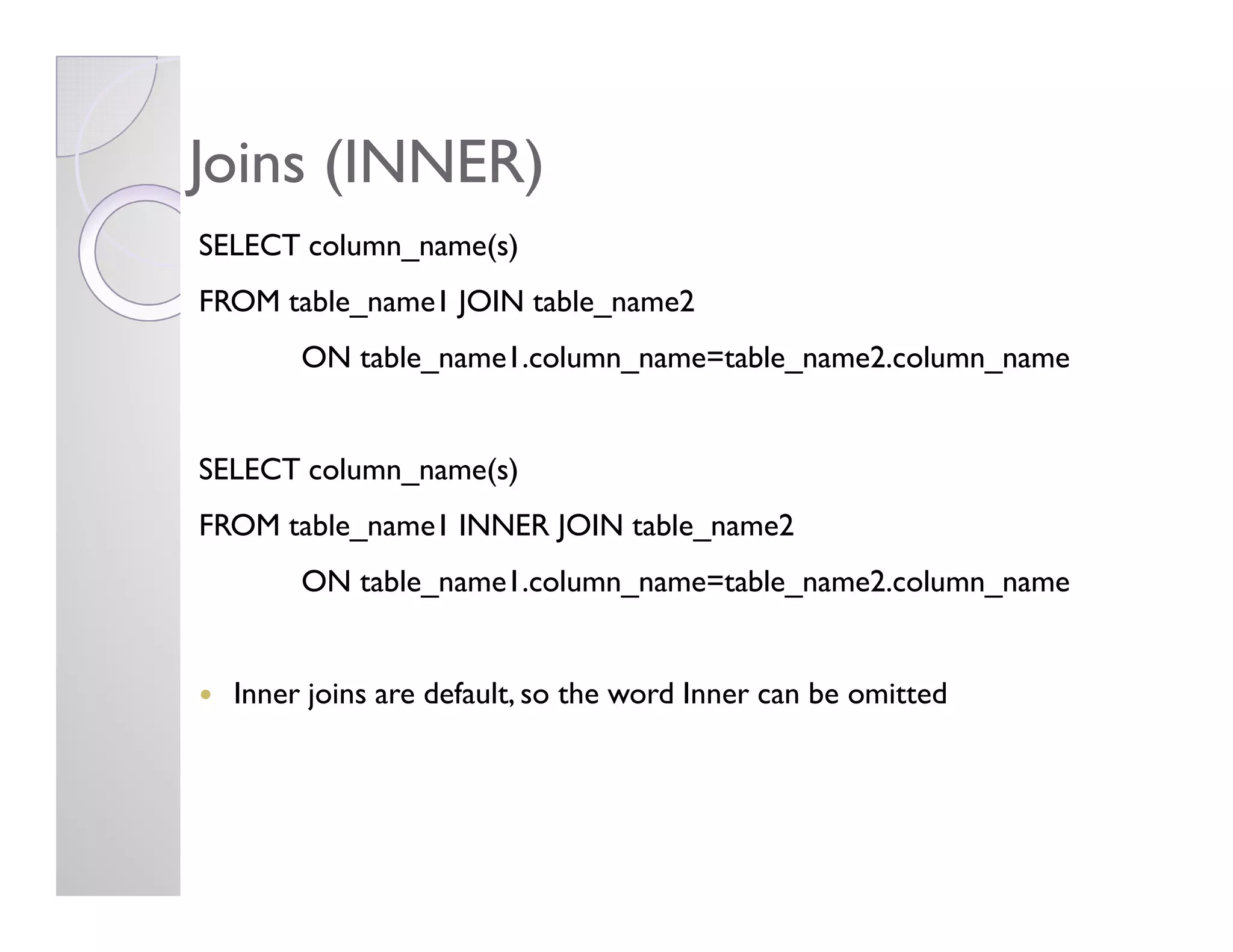
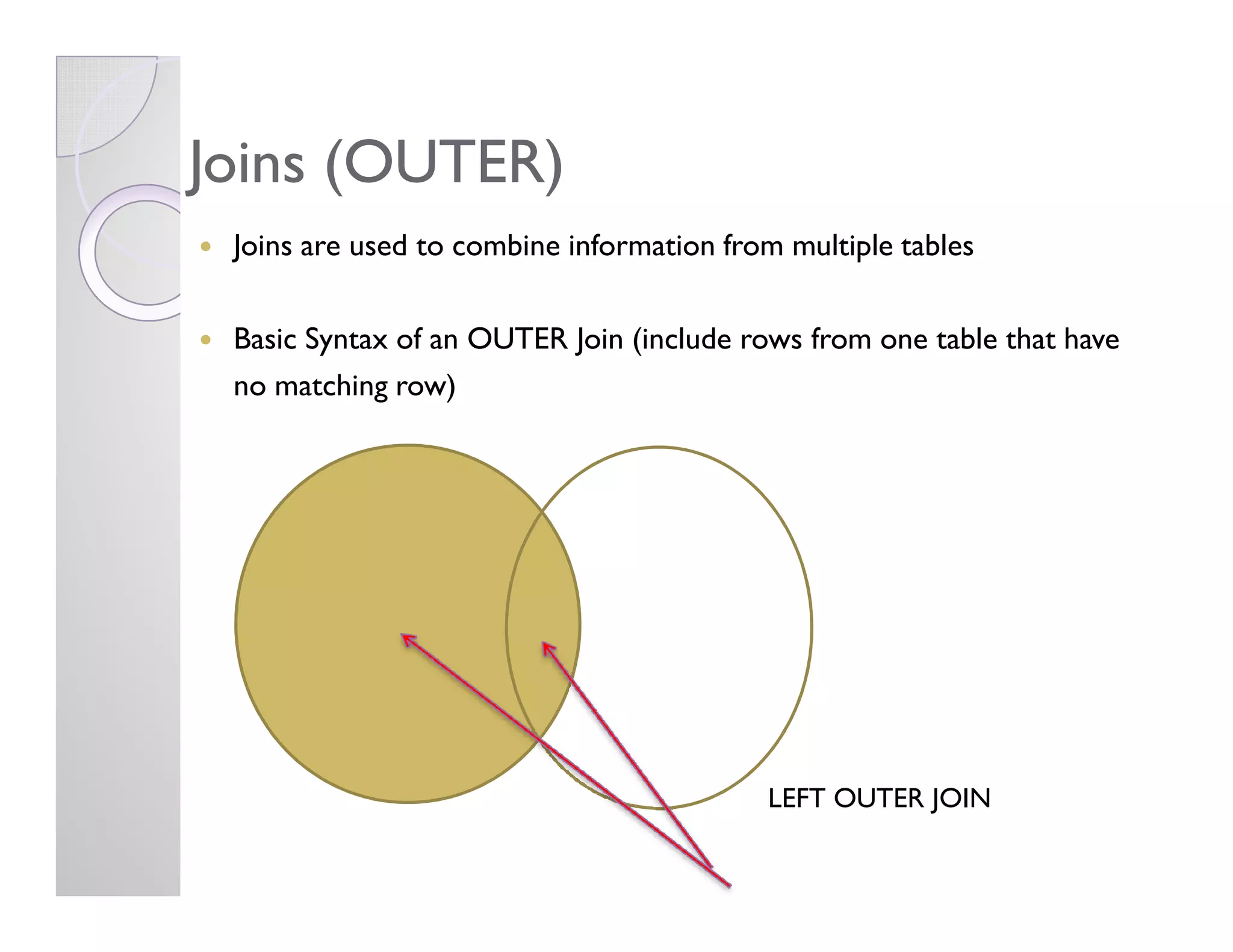
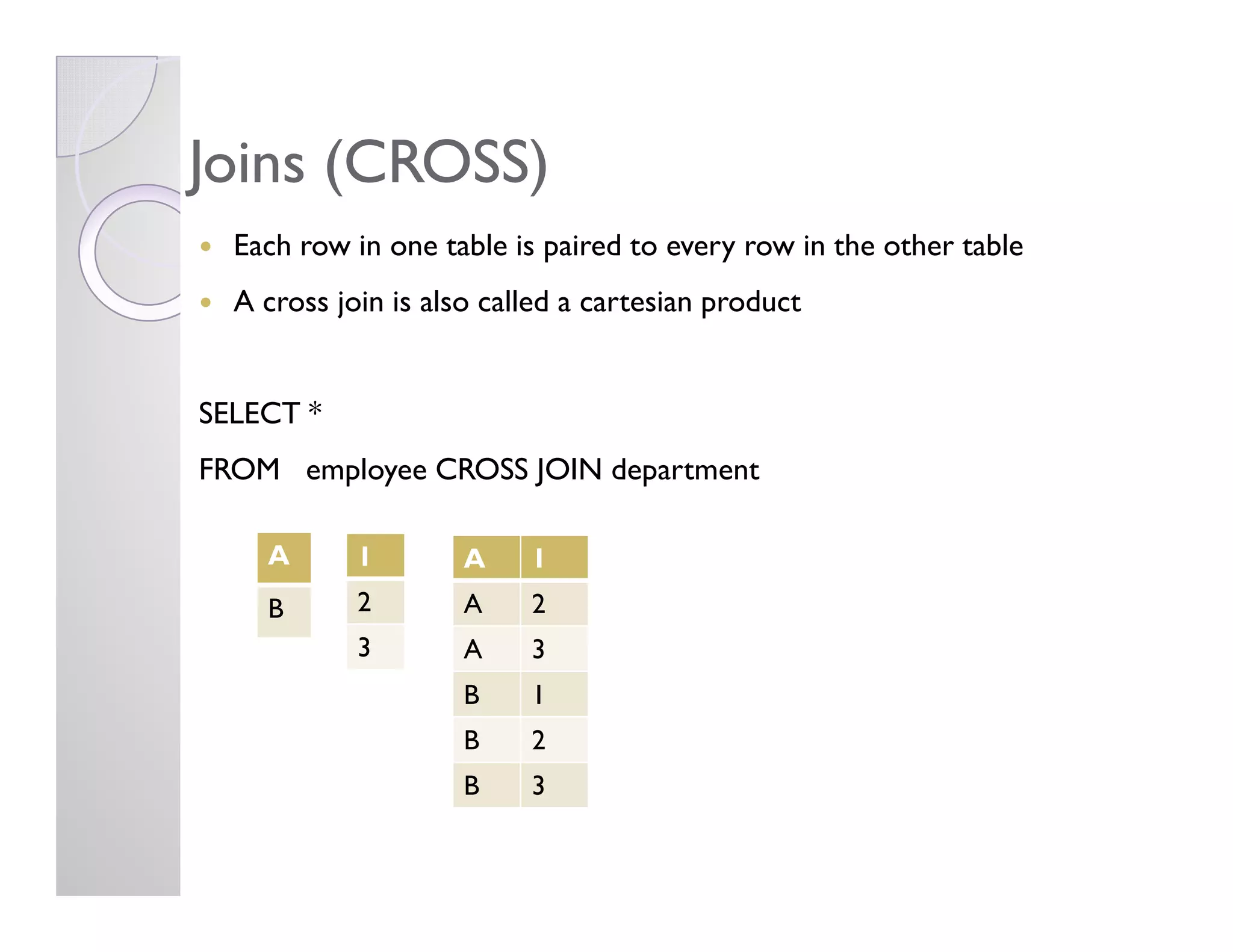
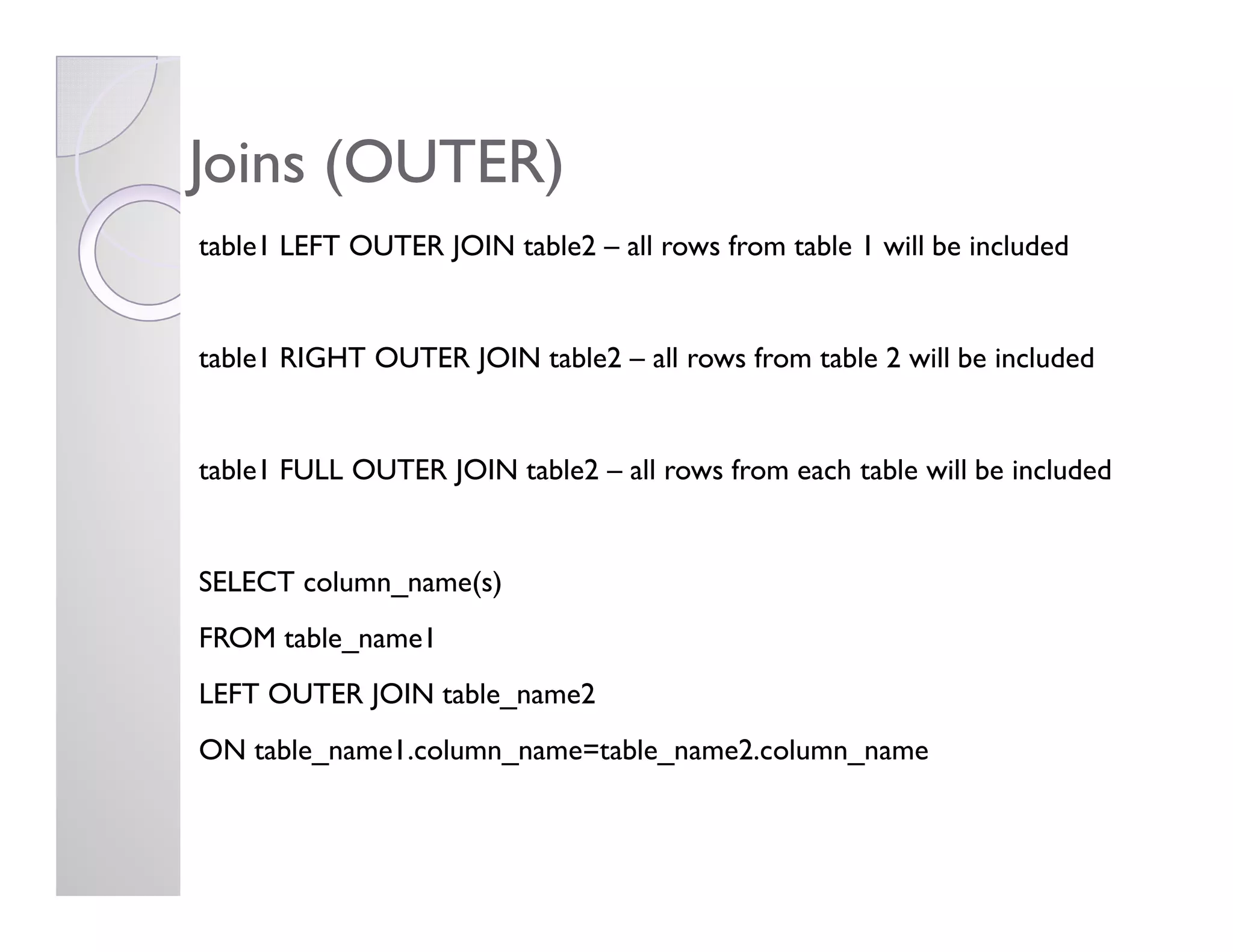
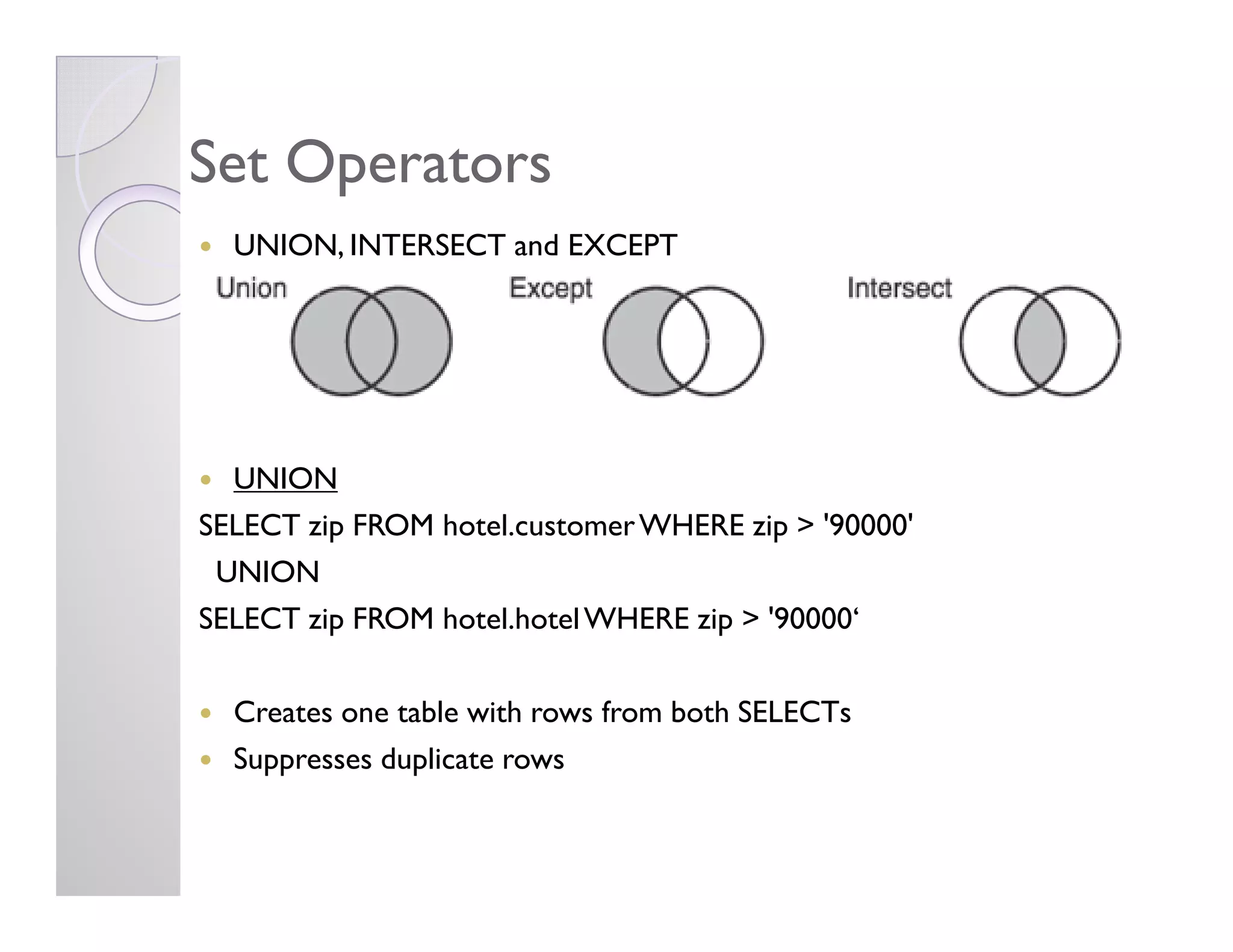
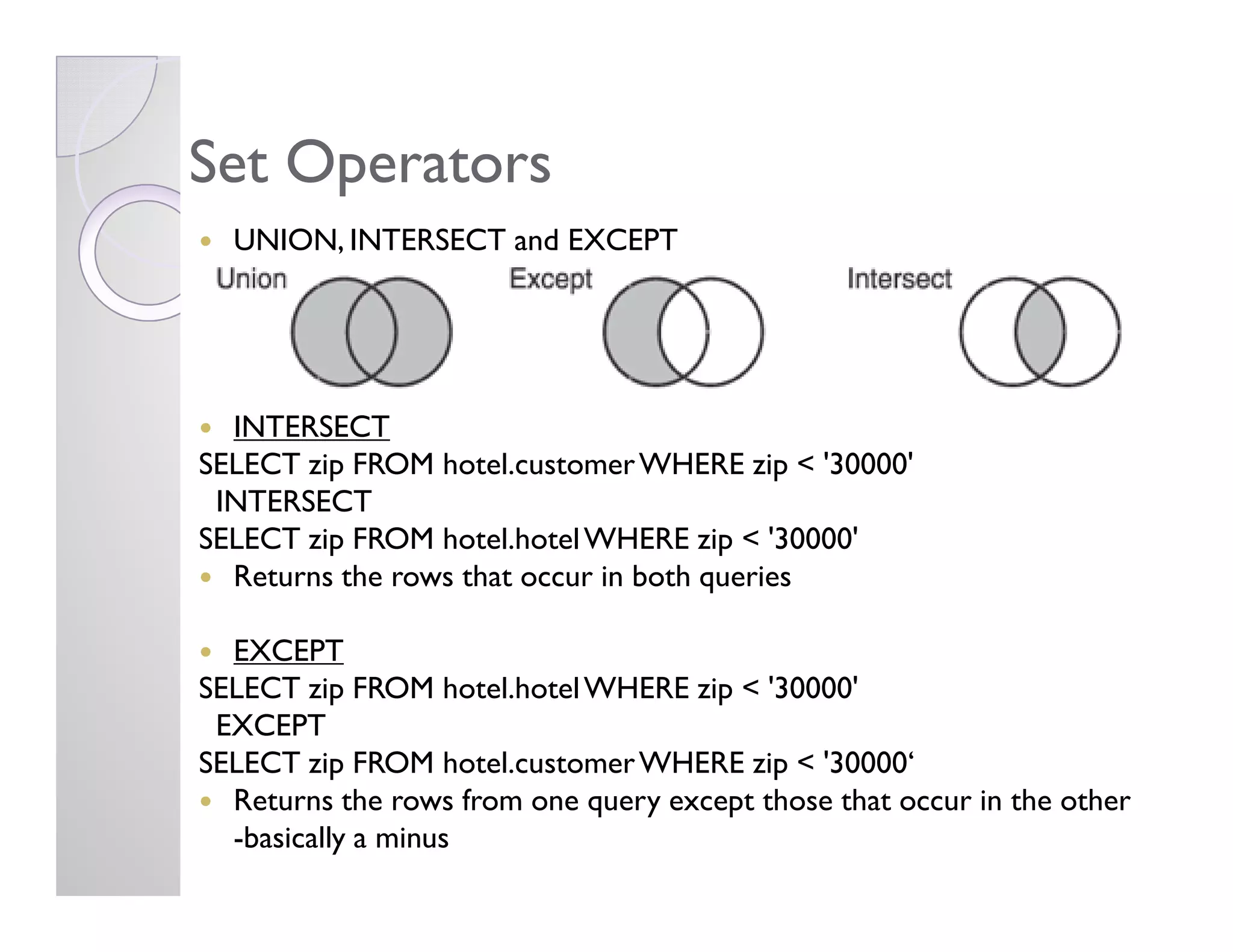
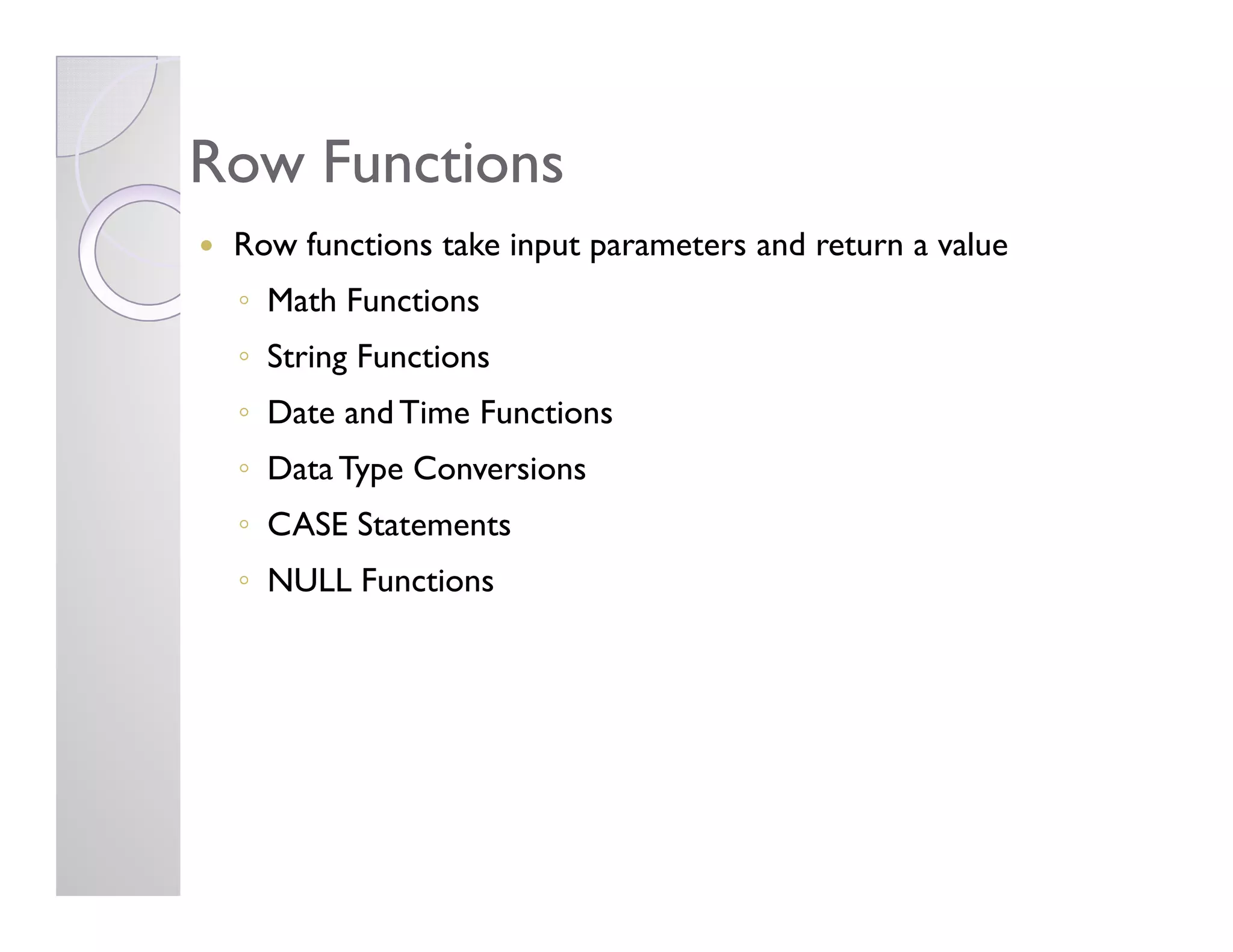
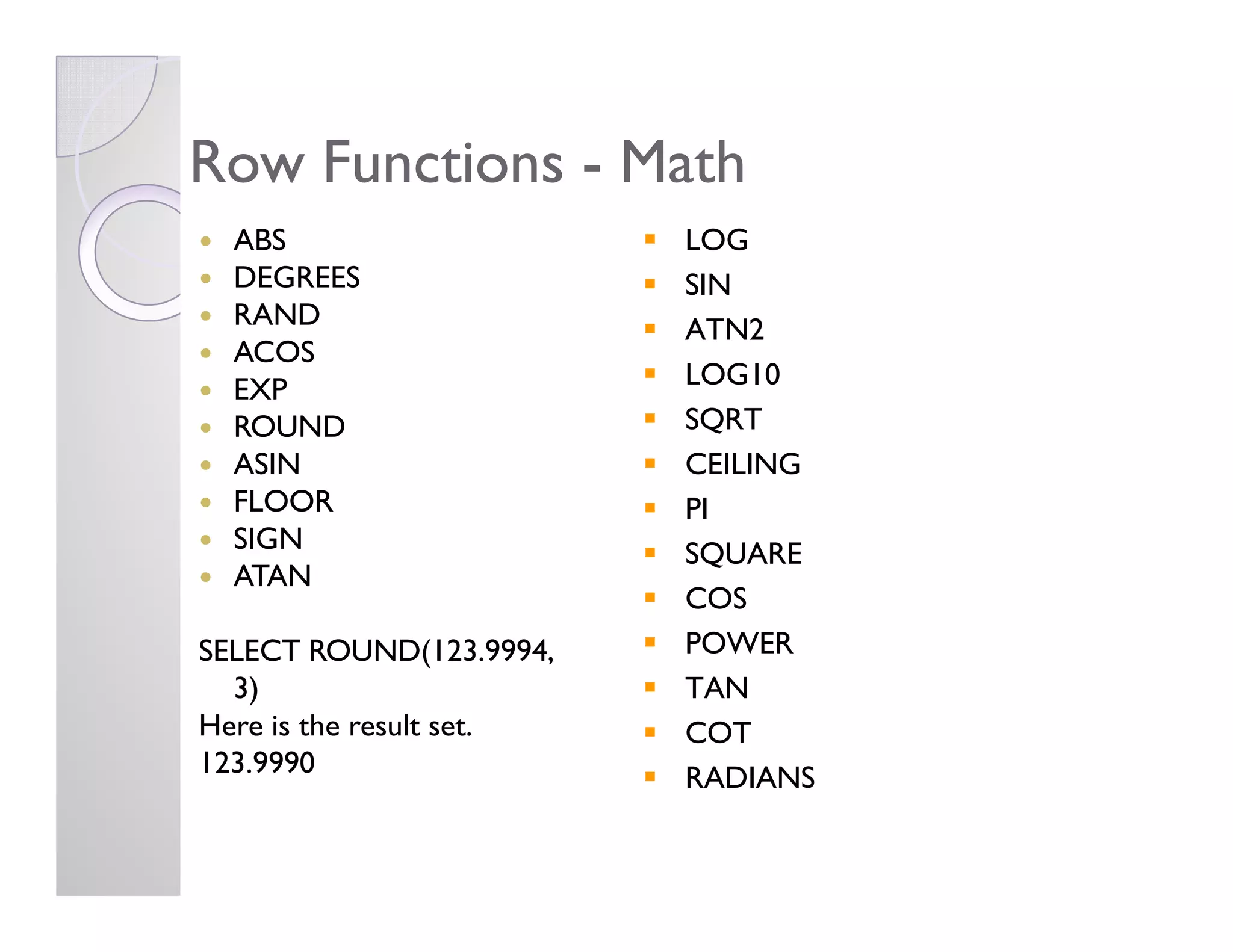
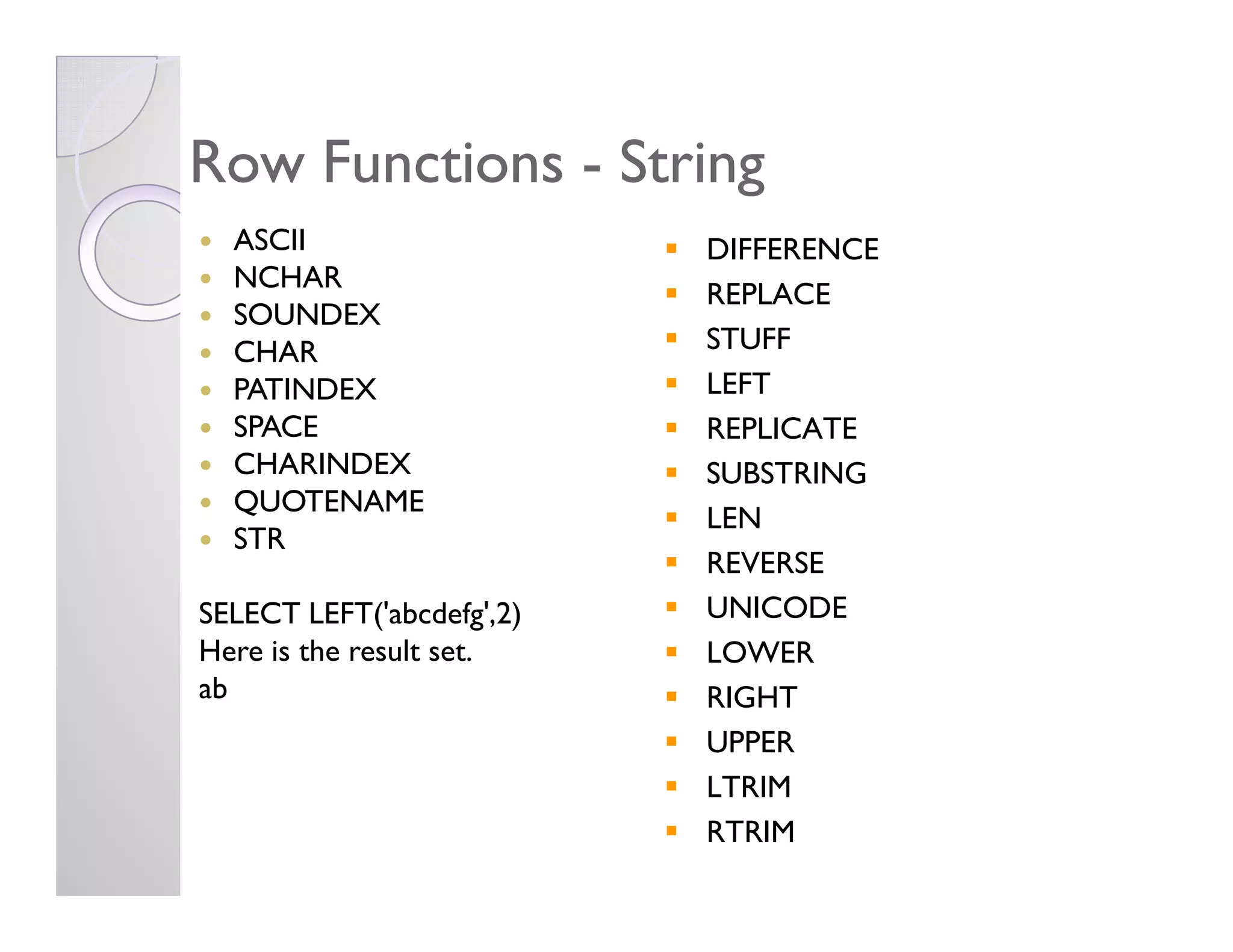
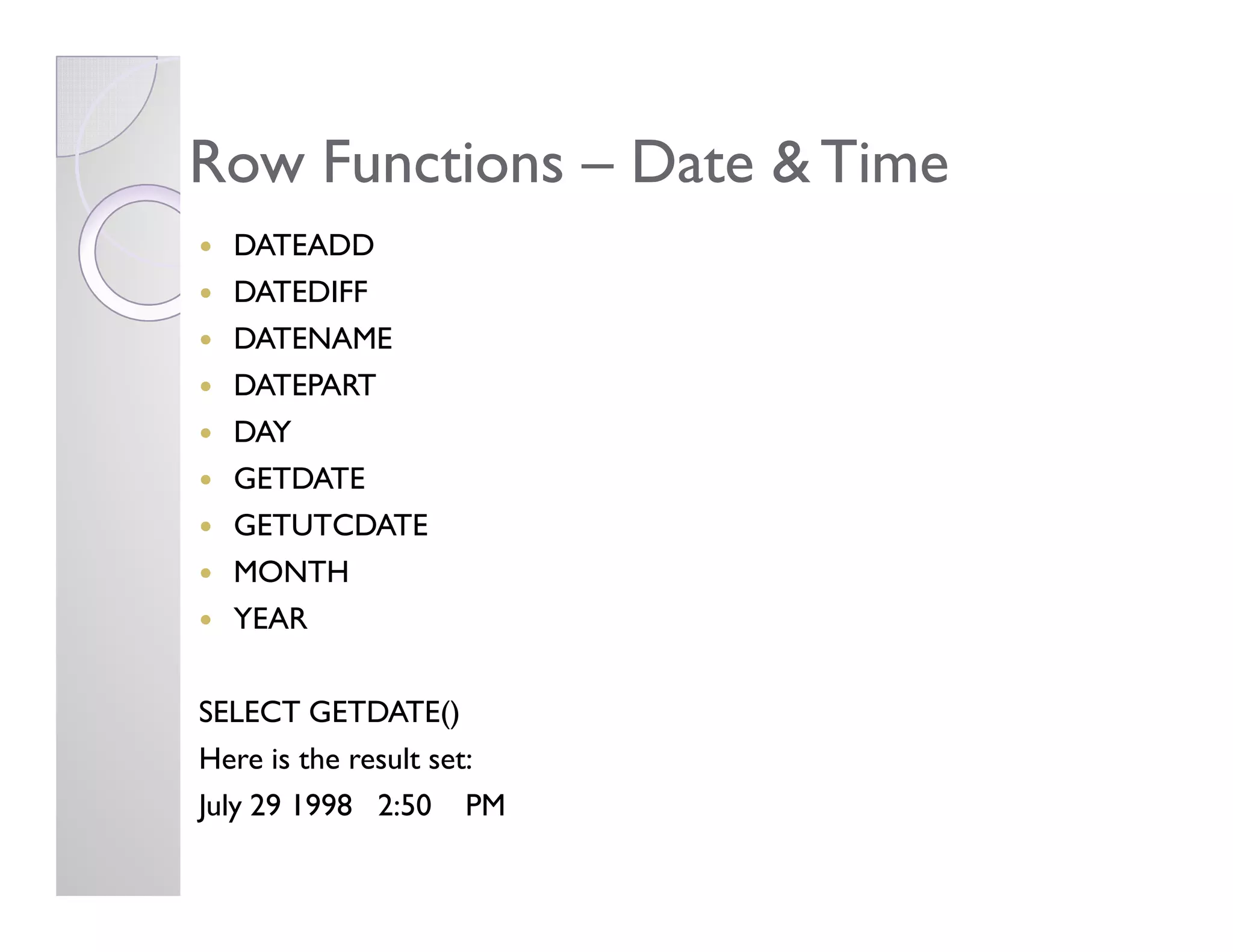
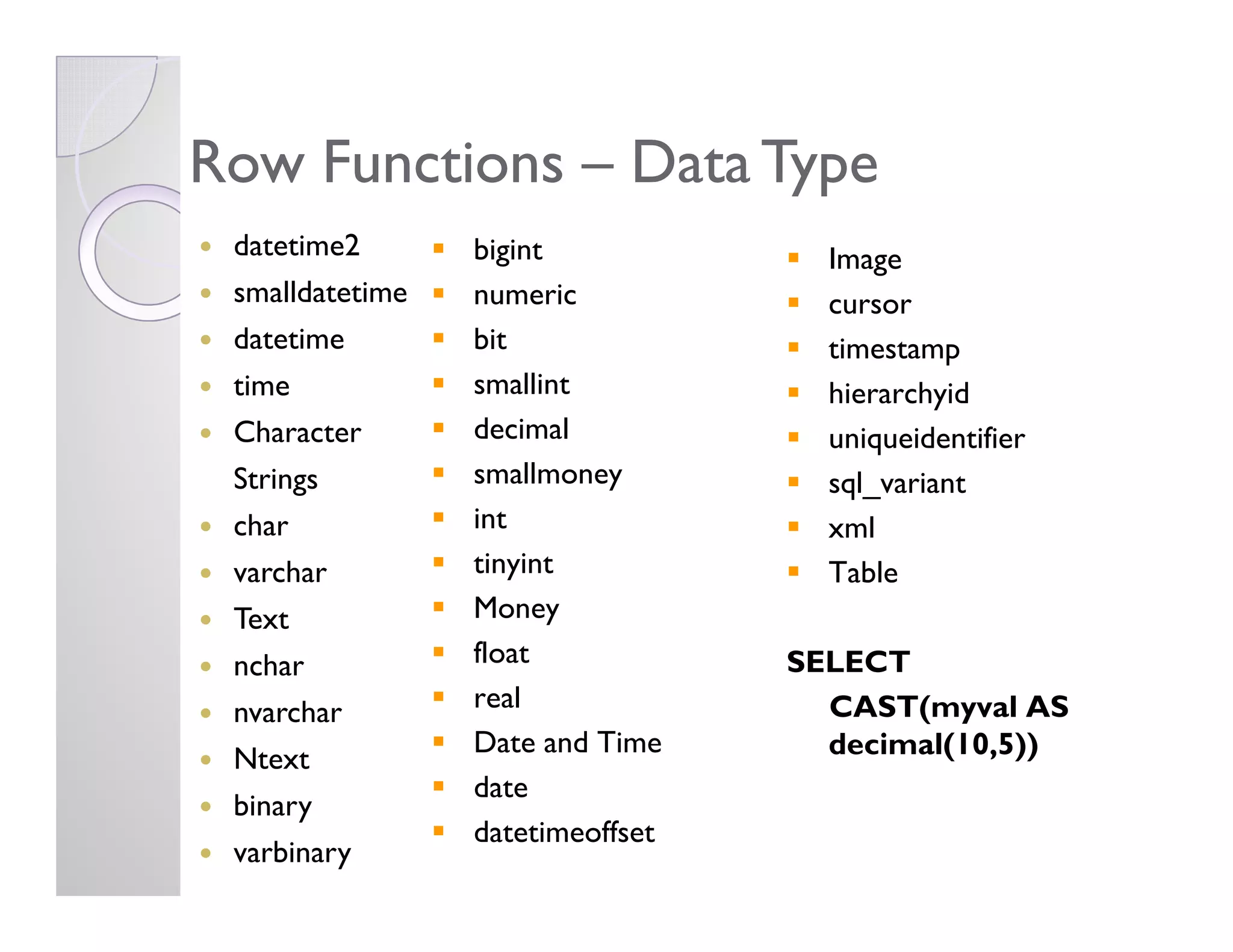
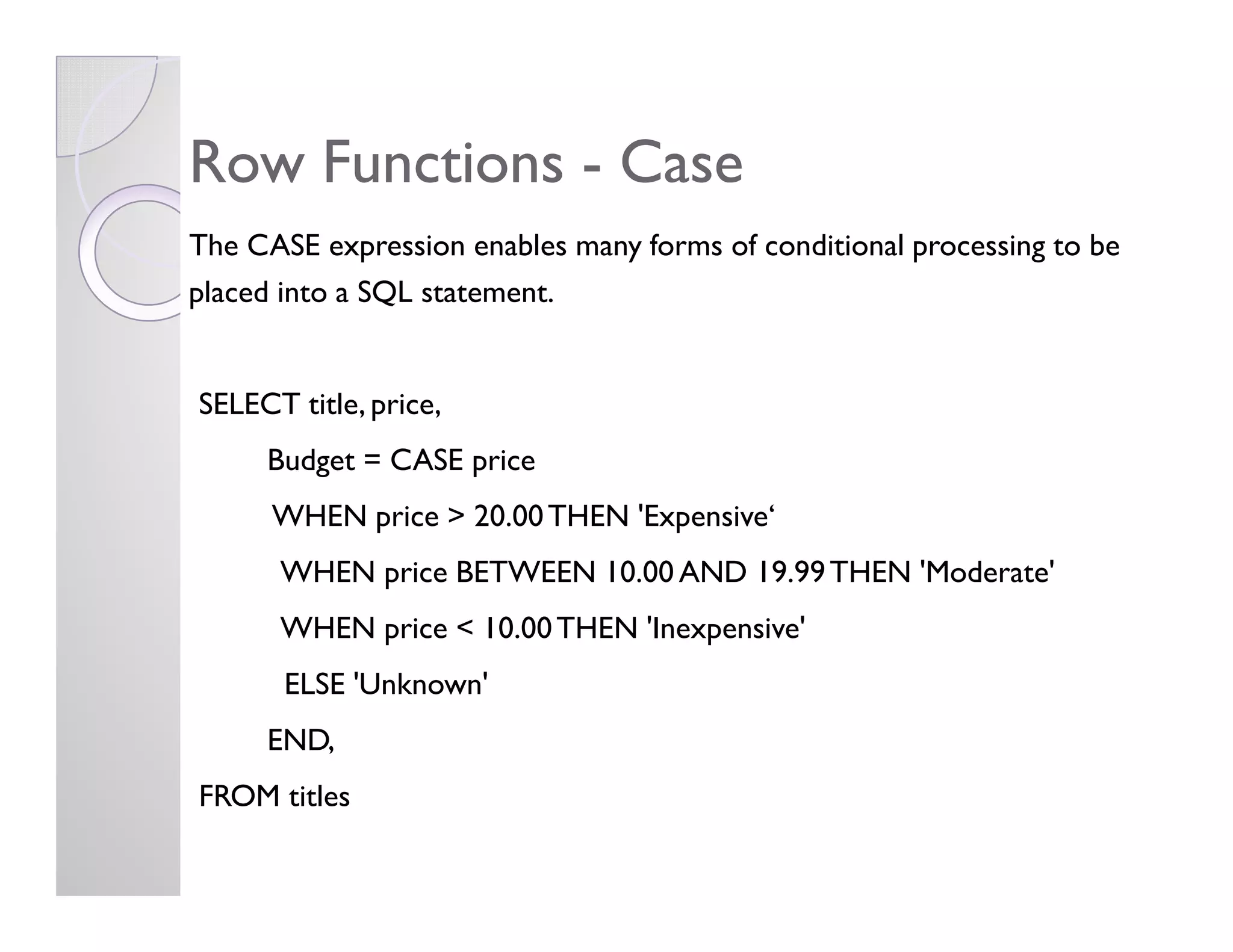
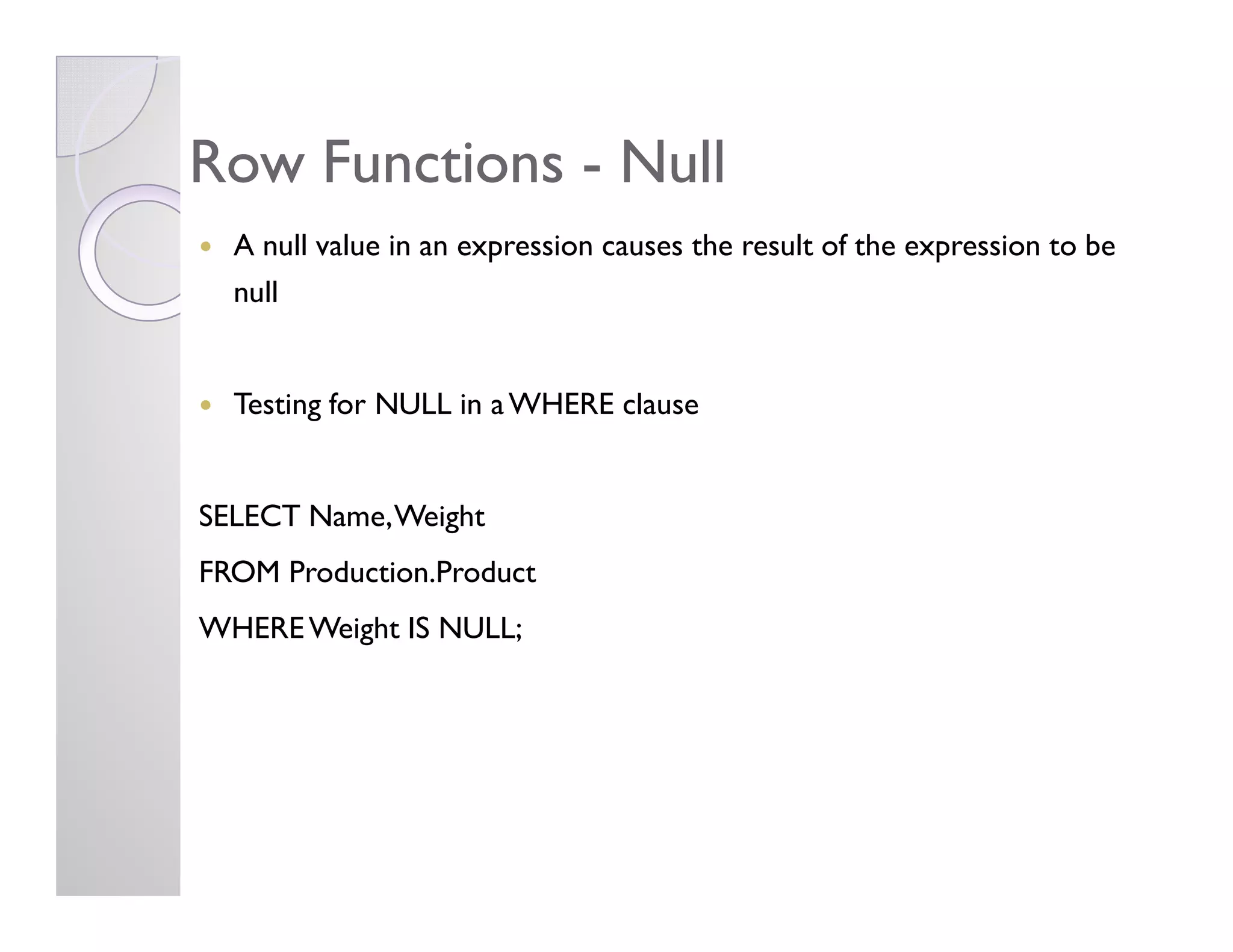
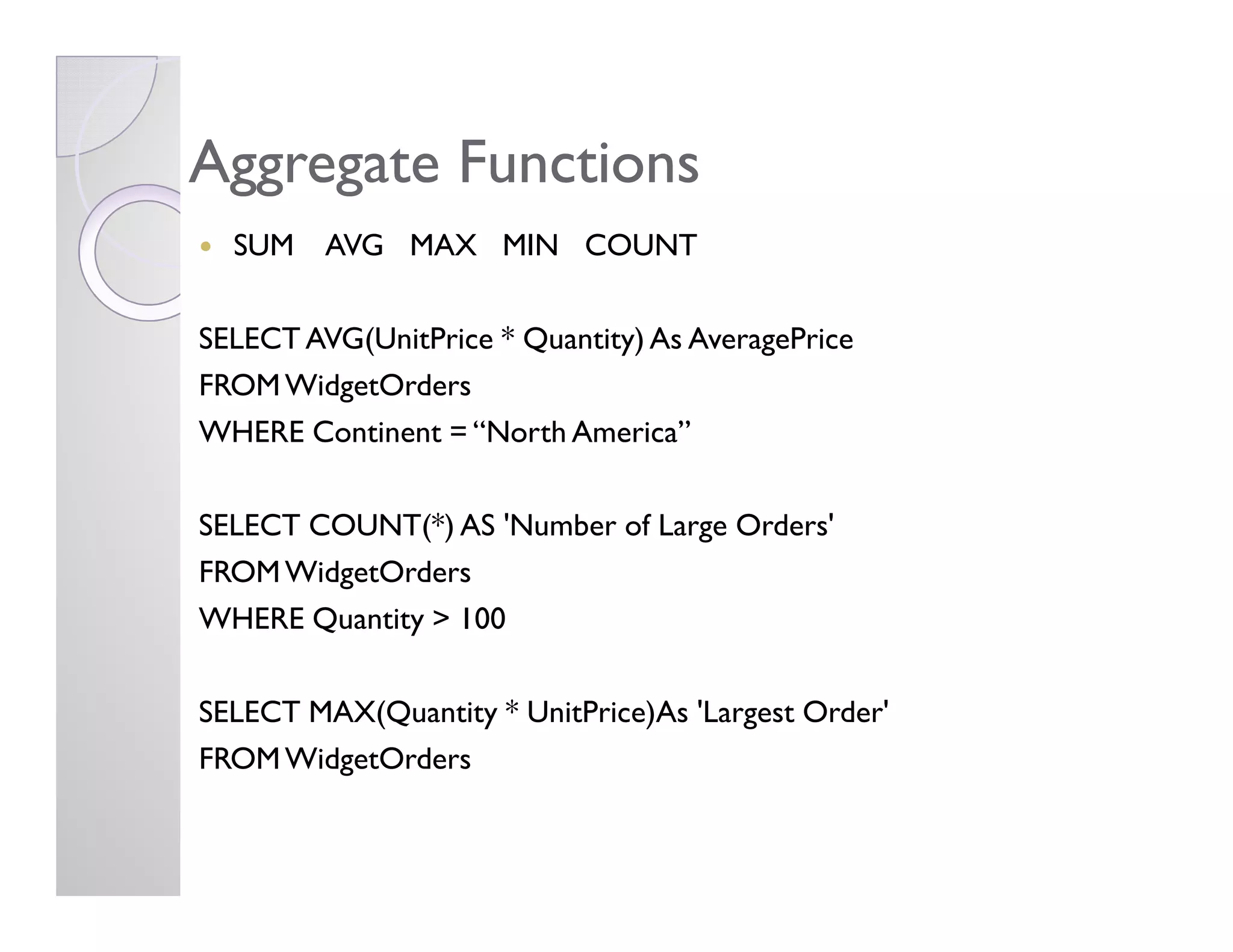
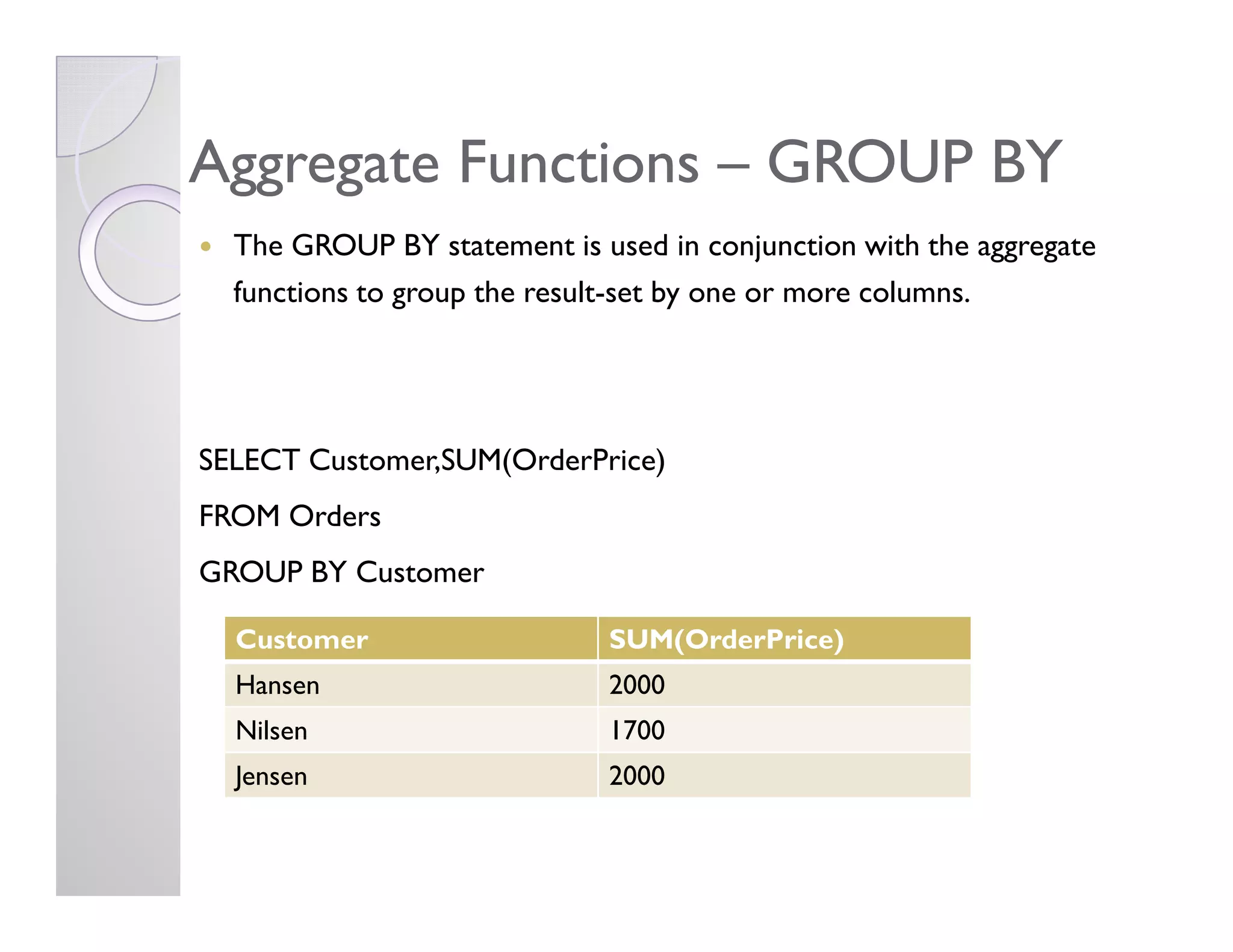
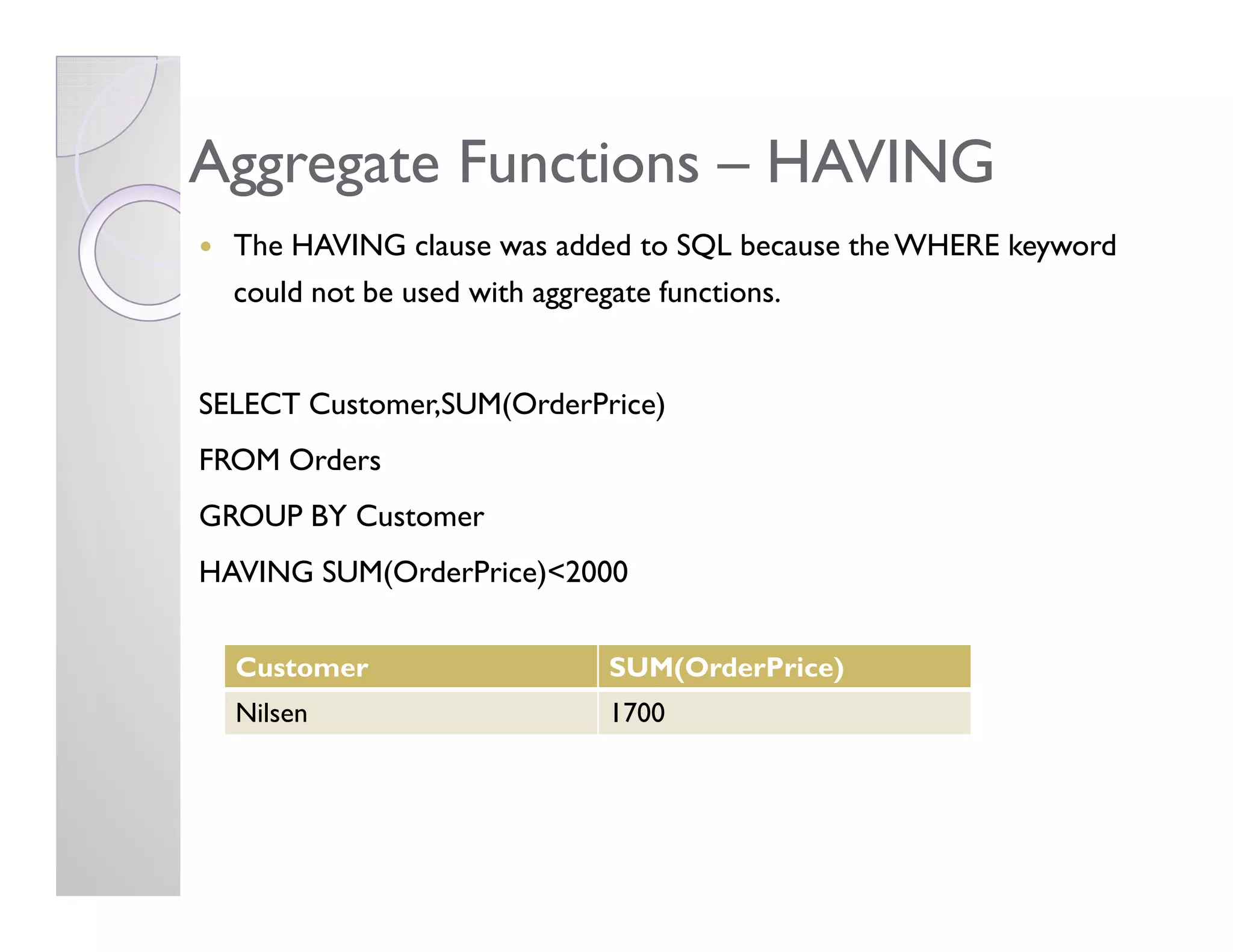
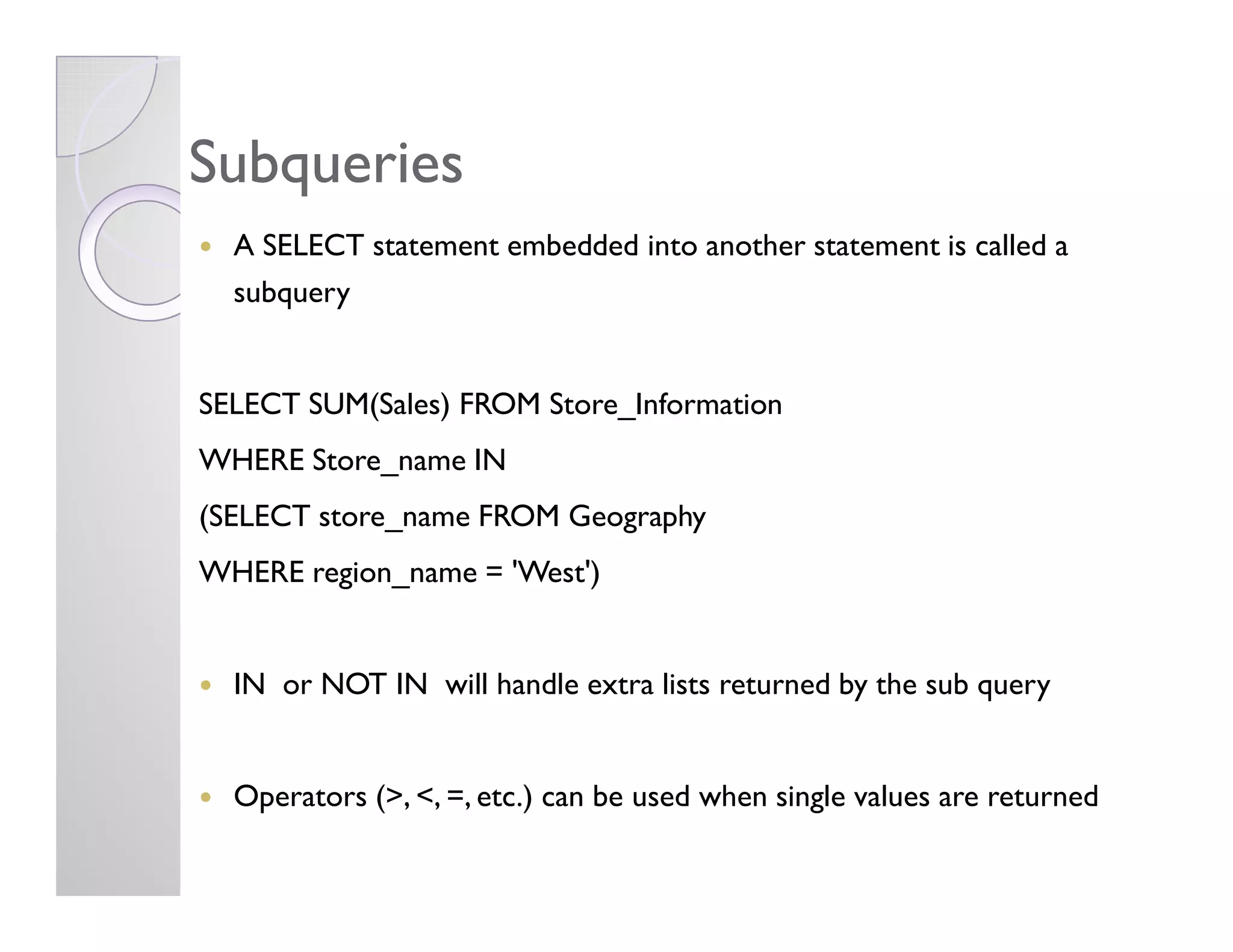
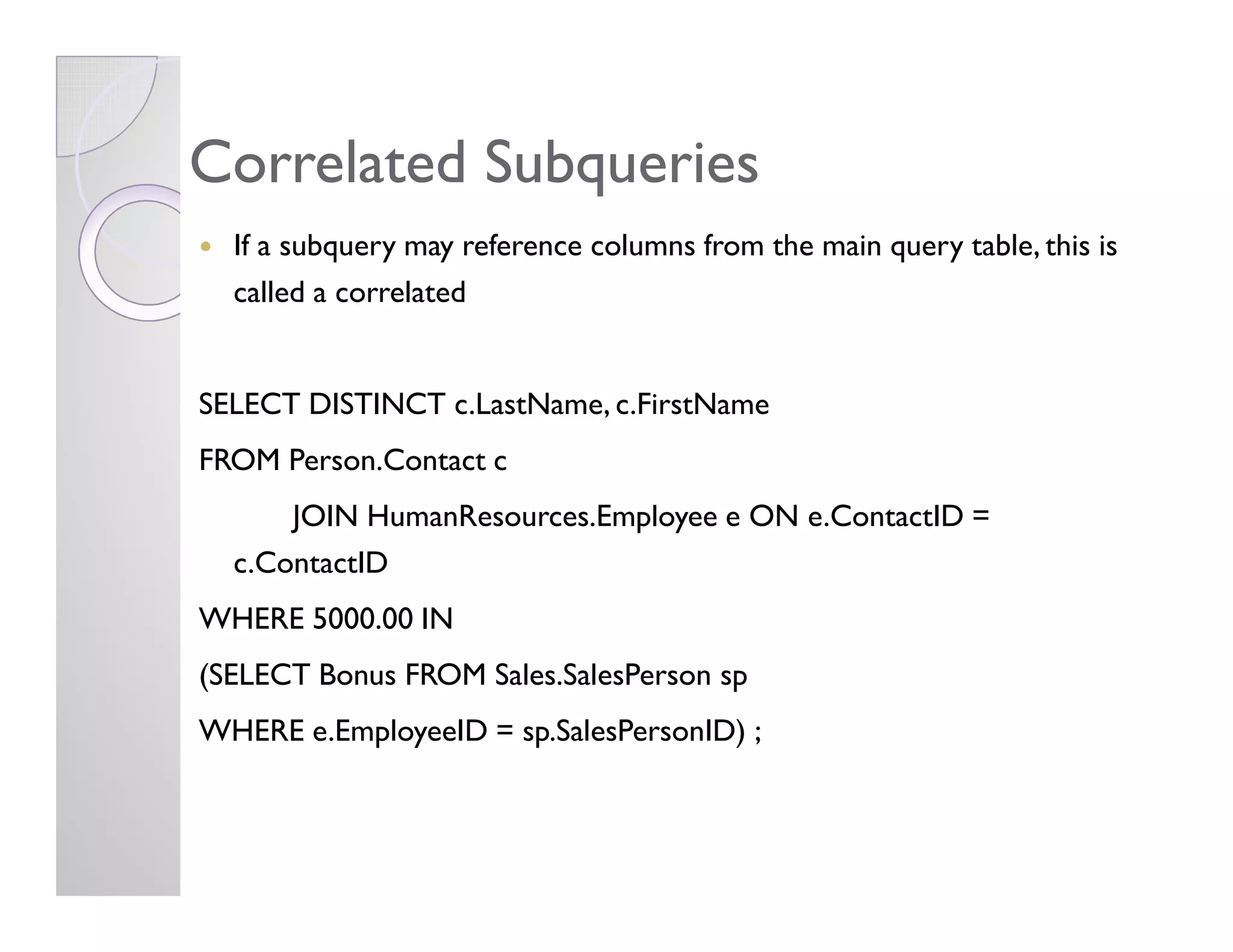
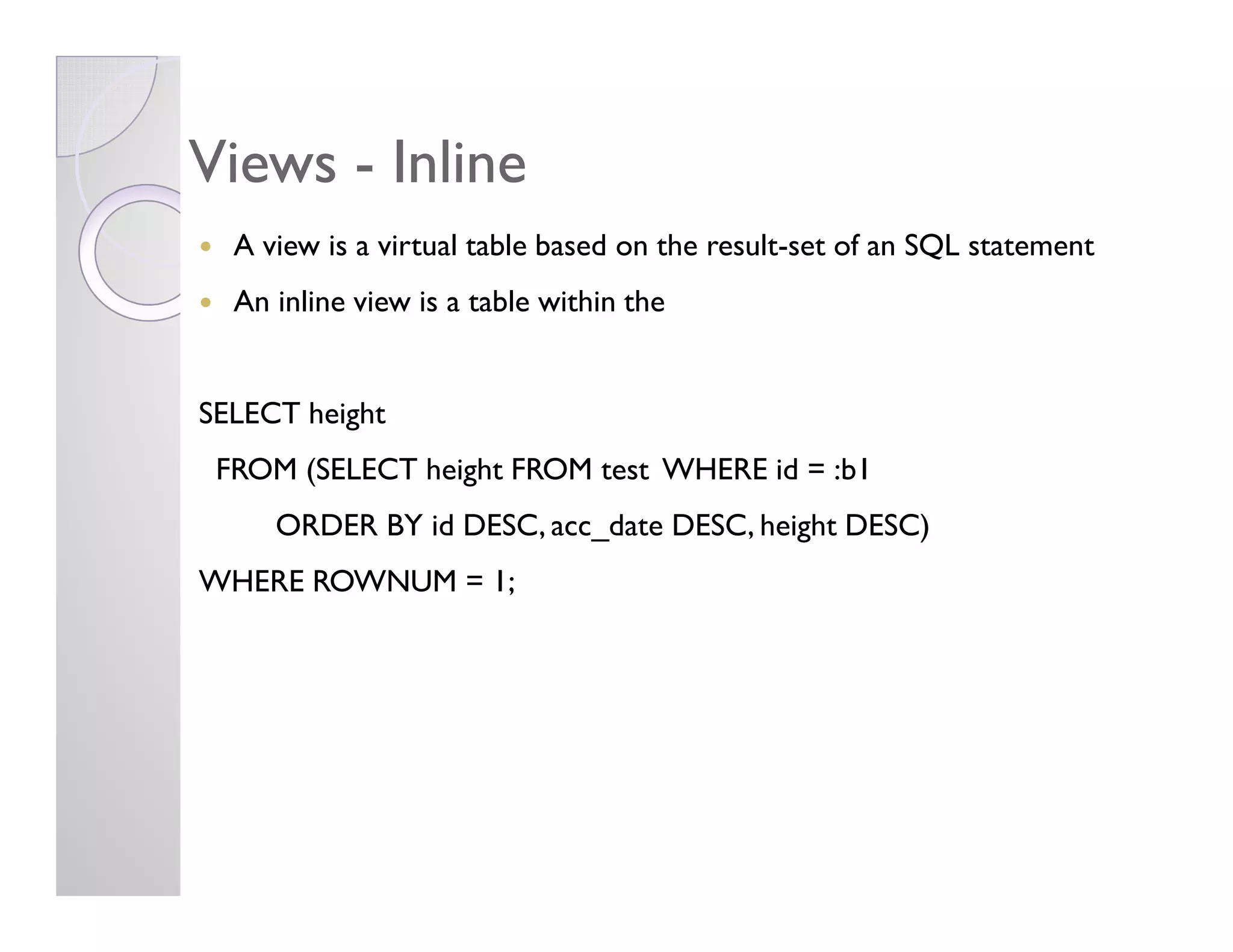
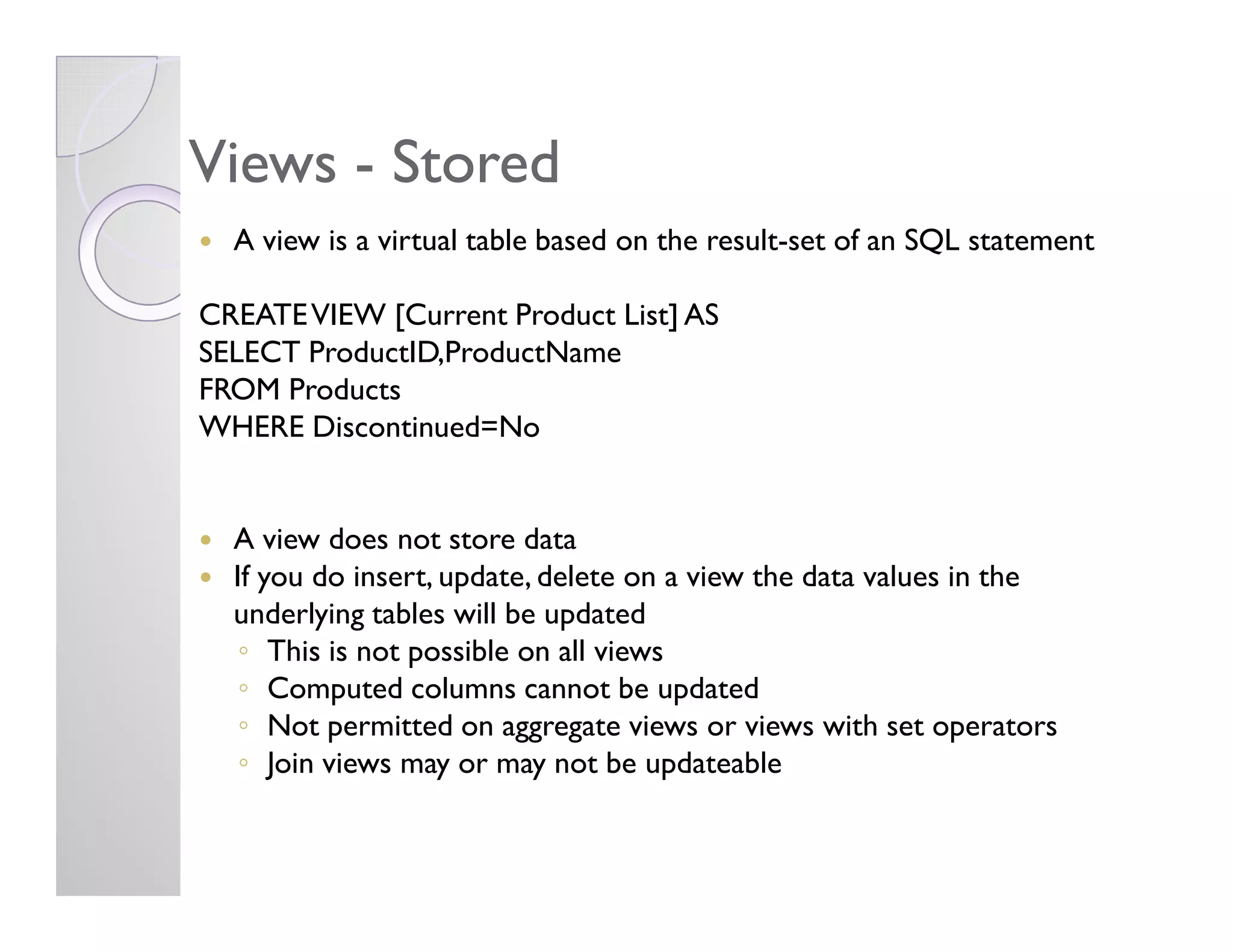
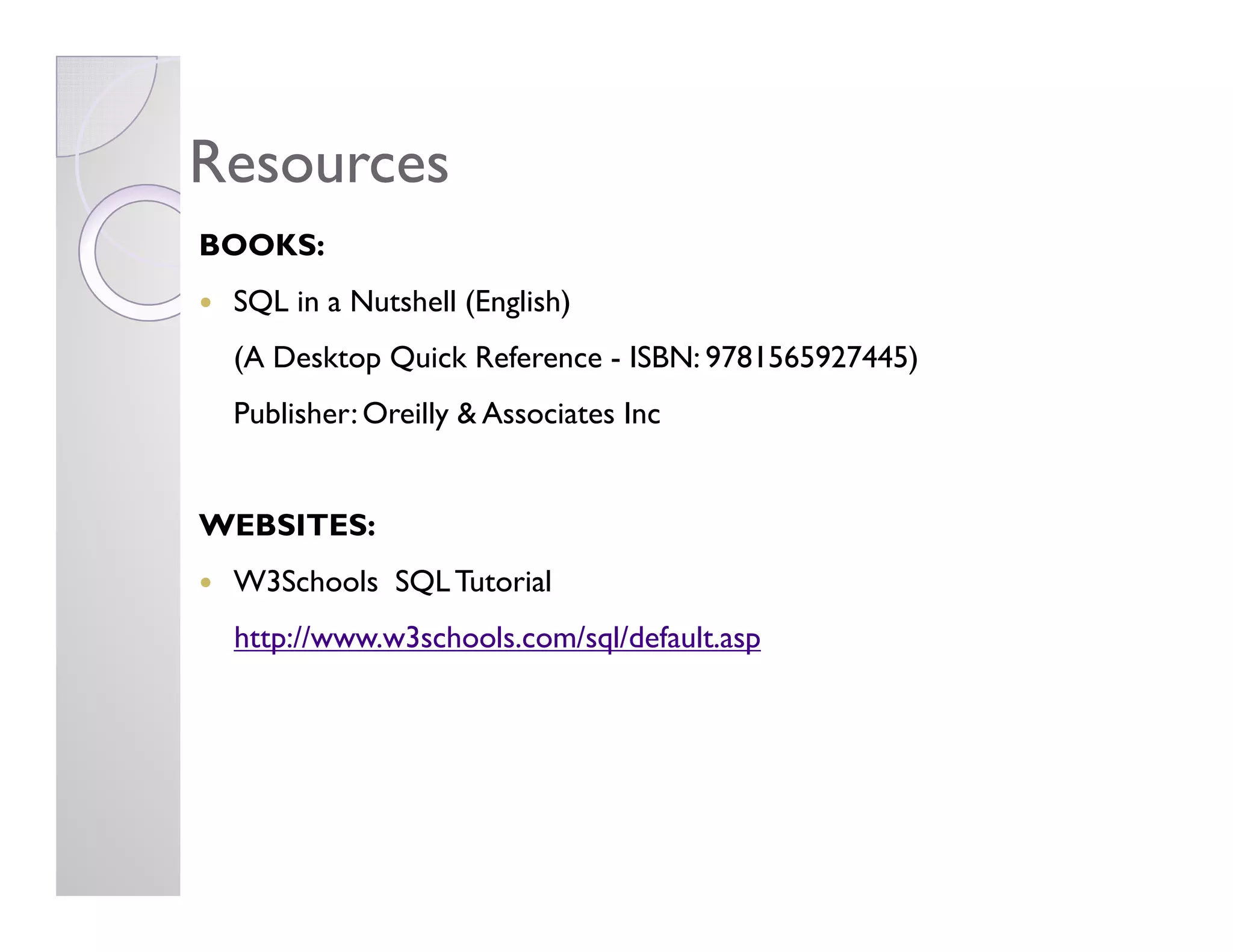

This document provides an overview of SQL programming including: - A brief history of SQL and how it has evolved over time. - Key SQL fundamentals like database structures, tables, relationships, and normalization. - How to define and modify database structures using commands like CREATE, ALTER, DROP. - How to manipulate data using INSERT, UPDATE, DELETE, and transactions. - How to retrieve data using SELECT statements, joins, and other techniques. - How to aggregate data using functions like SUM, AVG, MAX, MIN, and COUNT. - Additional topics covered include subqueries, views, and resources for further learning.
Overview of SQL programming, its importance, and objectives including understanding database structures and customer reporting.
Chronicles the development of SQL from 1970s to present, including key milestones and revisions in SQL standards.
Introduces SQL as a language for relational databases, covering key terms like tables, columns, normalization, and data relationships.
Details the creation, alteration, and deletion of tables, along with data types and constraints for valid data.
Explains how to insert, update, and delete data, including concepts of transactions and examples of SQL commands.
Covers the SELECT statement for retrieving data, including filtering, sorting, and the importance of the WHERE clause.
Explains INNER, OUTER, and CROSS joins, their syntax, and how they are used to combine data from multiple tables.
Describes how to use UNION, INTERSECT, and EXCEPT to combine and manipulate result sets, including examples.
Details various row functions such as math, string, date functions, NULL handling, and CASE statements for conditional processing.
Explains aggregate functions (SUM, AVG, COUNT) and their use with GROUP BY and HAVING clauses to summarize data.
Defines subqueries and correlated subqueries with examples on their usage in SQL statements for data retrieval.
Covers inline and stored views, their definitions, and differences, along with examples of SQL commands for creating views.
Provides recommended books and websites for further study of SQL, enhancing both theoretical and practical understanding.




































